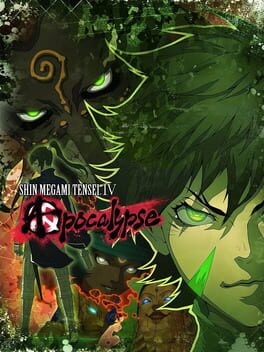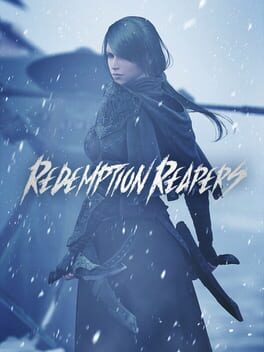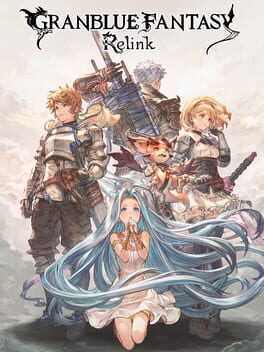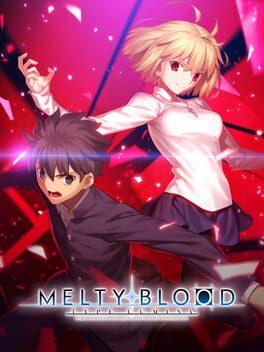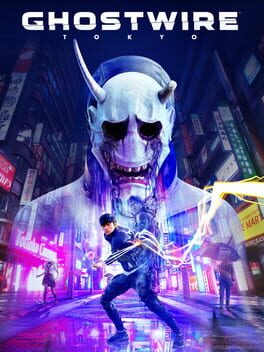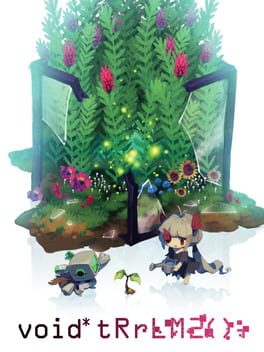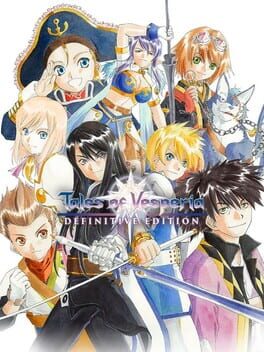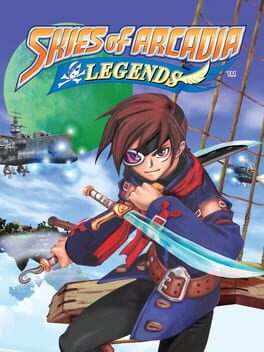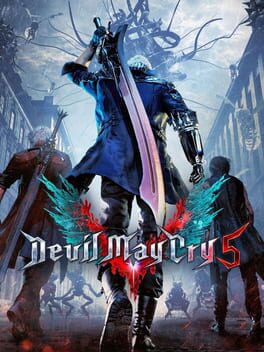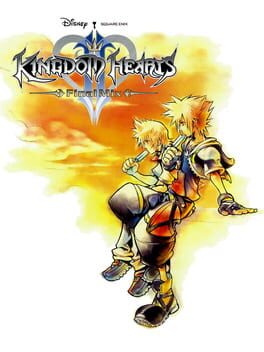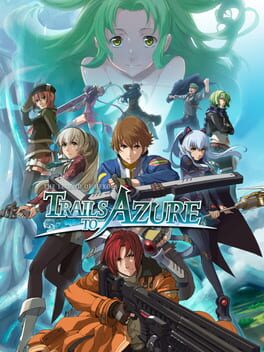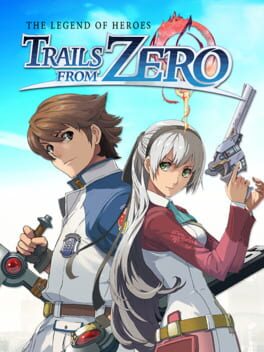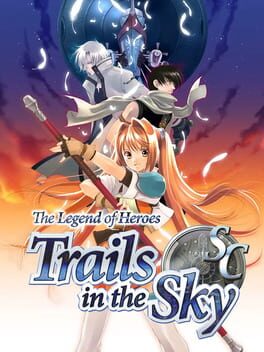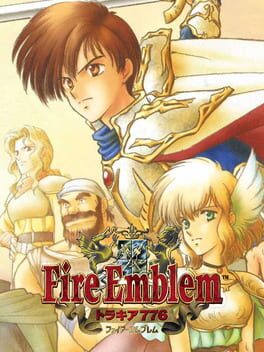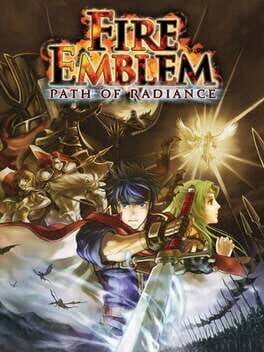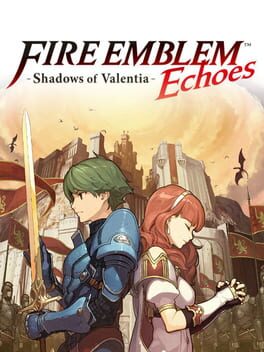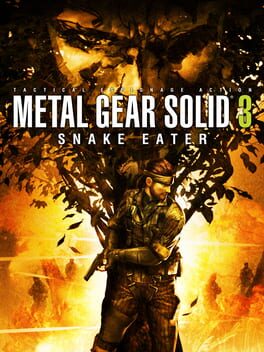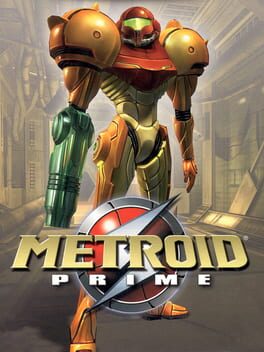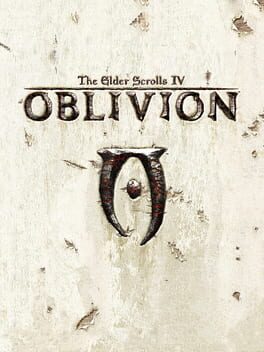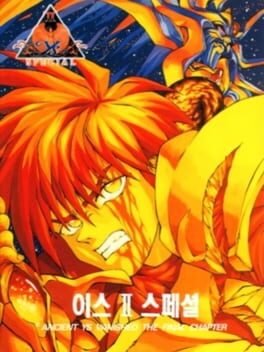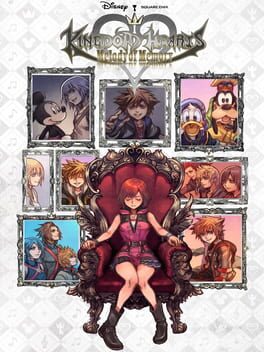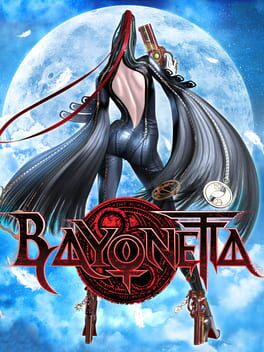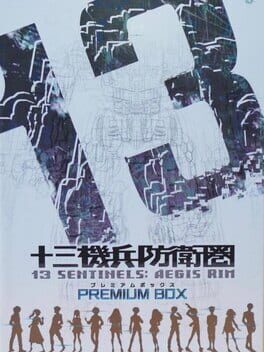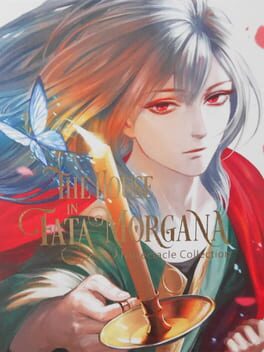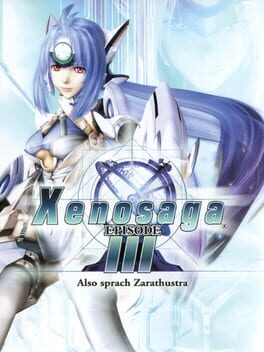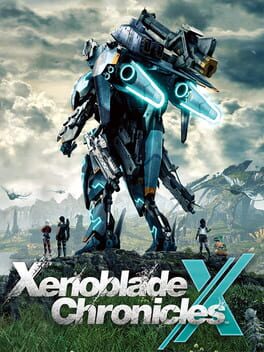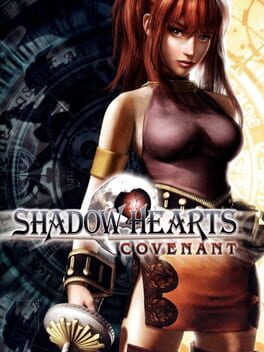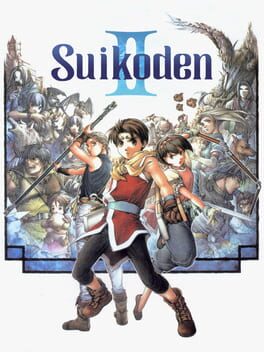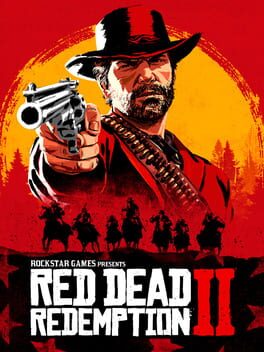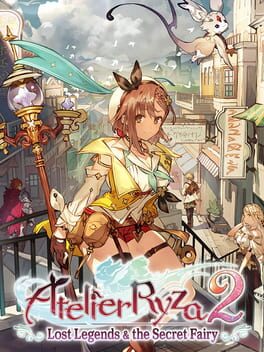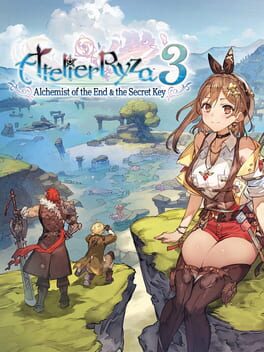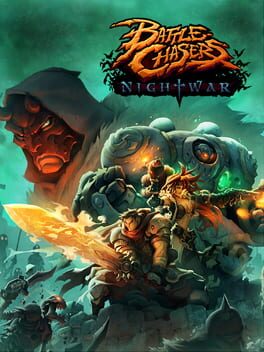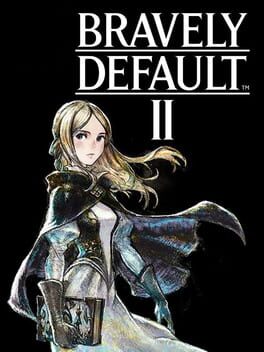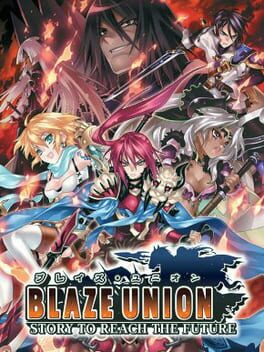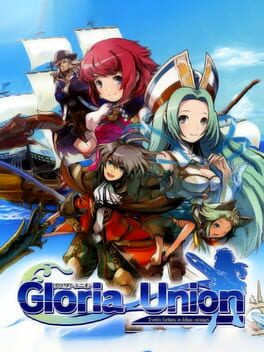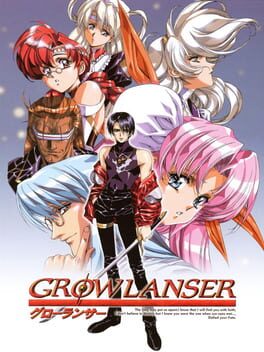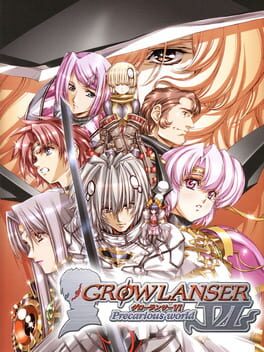sky_katchr
BACKER
8 reviews liked by sky_katchr
Relayer
2022
KEY NOTES:
-SRPG Tactical Gameplay
-Unique Playable Characters Only
-Job/Class System
-ENG/JP Dual Audio Voiced Options
-30-40 hours to clear main story + lengthy post game
Relayer is a SRPG developed by Dragami Games. The developers were originally part of the Kadokawa Games team that had also developed other games like Natural Doctrine and God Wars so they are no stranger to strategy games.
STORY
Taking place in the middle of the 21st Century, mankind had advanced into space after uncovering an artifact on the moon that dates back millions of years ago. That artifact takes the form of a humanoid mech dubbed the Original One and with it, mankind had dramatically increased their technological advancement within a short time period and were able to develop spaceships, mechs and space colonies. However, the discovery of the Original One also revealed the impending alien threat called the Relayers and their goal to end all life in the universe.
To combat the threat, spirits of the celestial bodies confer special abilities to certain individuals. These abilities include control over gravity particles and allows them to pilot special modified mechs called Stellar Gears that make great use of such particles. These humans who have the Will of the Stars are called Starchildren.
The story opens with Terra, the Starchild of Earth as she gets dragged into a battle involving some Relayers attacking the moon colony. Her younger sister, Luna suddenly steals the Original One and escapes the battlefield. Hoping to unite with her younger sister, Terra joins the Asterism crew on their mission to retrieve the stolen Original One and defeat the Relayers.
Relayer's story is a space opera with many different factions in play, but it's not a particularly deep or complex one as some would expect from the genre. The politics between the factions don't have much nuance to them and their motives are very clear and plain. Alliances and relationships are fortunately dynamic so they shift often and help keep developments somewhat interesting. The pacing isn't particularly slow either and reasonably paced throughout.
The worldbuilding isn't explored in great detail during the course of the story, but there are a number of terminology scattered throughout. Relayer's world doesn't have much originality within the genre, but it's still an interesting one. Further details are provided in the in-game glossary which makes for a fun read.
The sci-fi plot itself is rather straightforward and easy to understand without significant plot twists. Despite that, there is a lot of focus on it with some surprisingly lengthy cutscenes and dialogue. It has a good balance of relaxing slice of life moments and serious ones. Much like the worldbuilding, the story doesn't really do anything new that hasn't been done before. Even then, it was still interesting enough to keep me invested and see where the story was heading. Relayer may not have started off particularly strong, but it did ended on an emotionally high note making the story a highlight of the game.
CHARACTERS
Relayer's cast of characters is on the large side. From the NPCs in the different factions to the playable characters, there's a lot of characters to keep track of. Fortunately, nearly all major characters have sufficient screentime to leave an impression. While a few of the main playable character's development are lacking, most of them have decent to good development with sufficiently explored backstories.
There are a number of emotional character moments that took me by surprised. The game did a good job in getting me emotionally attached to many of the characters. The writing execution on these moments were well done in general. It helps that the group's chemistry is great and they are generally fun characters to watch.
The character storylines helped carry and move the story at various points making it a very character driven story overall.
The antagonists however are a mixed bag. Most of them are very cookie cutter one-note with shallow motives and goals. They lack any real depth or complexity. The saving grace with these ones are that the game does a good job in making you dislike or outright hate them.
VISUAL PRESENTATION AND DESIGN
Most of the game's story is told through Visual Novel style cutscenes. It is quite standard in that style, but there are often a lot of character sprite portraits on screen surprisingly. Each character sprite have a decent amount of different expressions and poses to help keep things more engaging. There are also times when they tried to be creative by shifting the sprites around the screen to indicate movement. These are mostly used during comedic moments.
The Stellar Gear designs look pretty nice overall and were very appealing to me, but they lack variety within the same Class types. All of the Sniper Class Gears for example have the same structure and the only aspects that distinguishes them from one another are the different paint jobs. On the positive side, the Gears do look noticeably different when compared to other Classes.
Enemy mech units are unfortunately very plain and generic looking. They don't really get custom designs and it's very hard to distinguish them from one another at a glance.
If there is one visual design that Relayer does well is the use of battle cutscenes. When initiating an attack against an enemy unit or on the receiving end, the game switches to a short cutscene of a few seconds. Counterattacks and evasions are done within the same cutscene as well which makes it flow very well. The cutscene use very dynamic camera angles to simulate the actions which results in some dramatic moments. The highlights are the duels between same weapon types so there's more going on then a one sided assault. Overall, it's like watching an anime mech fight scene. There isn't a lot of variety however, but I never got tired from watching them. For those that do get tired of them, there are options to speed them up or outright skip them.
MUSIC
Relayer's soundtrack was composed by Shuichiro Fukuhiro and Kensuke Inage. The former only did a few tracks including the Title Screen track and the ending theme. Kensuke Inage did the majority of the soundtrack. The soundtrack as a whole doesn't have many tracks. At roughly 15 tracks, there are many repeated songs played throughout. Most of the songs aren't amazing, but they sound nice and fit the sci-fi theme of the game especially the battle themes. The main highlight is the ending theme song which sounds like something from the Ar Tonelico series.
GAMEPLAY
The gameplay loop is simple. You advance the main story from a list. Story battles are not repeatable in a single playthrough, but nearly all of them have a repeatable skirmish battle with the same enemy placements. There's just isn't any story dialogue in these skirmishes.
When not moving the story along, you spend most of the time at the Asterism ship hub. Other than the typical tinkering with character equipment and abilities, you can view optional side events with characters. These events are a nice to way for further development of characters and see how they interact with the characters they don't normally interact with during the main story. Many of them are on the humorous and comedic side.
There aren't any sidequests or side content other than these optional events.
COMBAT
Battles are fought on a large grid map and the fundamentals to the combat are simple. There isn't anything particularly complex in its mechanics and not a whole lot to keep in mind either.
Relayer makes use of character turns instead of player's turns. On a character's turn, they can move and then perform an action, but they can't move after an action. A key aspect of the combat revolves around good positioning and taking advantage of attack ranges.
Not exactly like a triangle weapon system seen in some other SRPGs, Relayer's weapon advantage system is more about whether the weapon ranges are different or the same. After receiving an attack, a unit will counterattack if it's within their range. The use of range is also not typical either. Using the machine gun as an example, it has a range of two spaces. It can attack any unit from two spaces away, but it cannot attack anything within one space. So if it receives damage from a sword attack which has one space range, the machine gun unit cannot counterattack. The logic applies to the other ranged weapons in the game like the Sniper Rifles and Bits. The weapon range setup essentially gives a large advantage to units initiating an attack with a different weapon type.
One mechanic that further emphasis positioning is Back Stab. After finishing an attack on an enemy, if there's an allied unit placed directly behind the enemy, then the ally can initiate a subsequent followup attack which cannot be countered. While useful overall, this only works with other sword users so the conditions are stricter than I'd liked. Enemies can also use Back Stab as well.
Another key element of the combat is the Aggro system which isn't too common in these types of games. Aggro builds up on every action and the higher it is, the higher an enemy unit will likely target them over others. Many characters have abilities and effects that make use of Aggro one way or another. Whether it's a Tank that has buffs that can increase its Aggro, Assault's skills that get stronger as its Aggro rises or a Sniper's ability to drain its Aggro to remain hidden, Aggro as a whole affects many character's roles.
While not a unique or original mechanic in anyway, buffs and debuffs in the game are very effective. Nearly every unit in the game has some variation of buffs in their arsenal.
The enemy A.I. is somewhat decent, but they aren't aggressive enough at times. Enemy forces on the other side of the map won't charge forward or engage until an allied unit is within nearly within striking range. They do make good use of buffs, debuffs and inflicting status ailments though.
Battle objectives are very ordinary here and without much variety. Nearly all of them requires defeating every enemy unit while some allow defeat of specific units only. A Game Over is usually when all allied units are defeated, but there are a few where the defeat of a guest unit is an automatic Game Over too.
A neat aspect about battles are the large deployment capacity. You can eventually deploy up to 10 units per battle so you can use favorites more often.
As a whole, the game's difficulty isn't that challenging. Although the higher difficulties have enemies with stat advantages over your characters at similar levels, good use of positioning and fundamentals of the system can get you far. It's worth noting that defeated allied units cannot be revived in the same battle whether by using consumable items or from a character skill. There aren't any permadeath in the game fortunately.
BATTLE MAPS
One of the biggest and common complaint with Relayer are the battle maps. They are pretty much nearly identical from one another and consist of large, but flat battlefields. There's no elevation to hinder you or special terrain that decreases how far a unit can move through. They are very empty and a lot of tactical strategy potential are lost from them.
At around the halfway point of the game though, you do start seeing obstacles in the terrain. They can't be broken or climbed over. Weapons and attacks can't bypass them either with the exception of the Bits weapons. Depending on the map, these obstacles can either provide limited issues or a bigger hindrance as they force characters down narrow paths. It's worth pointing out that these obstacles only exists on maps where there's solid ground.
WEAPONS AND UPGRADES
Another issue with Relayer is the lack of weapon variety. There's just six types in the game. Two of them includes the one-handed sword and the two-handed sword which are mostly similar to each other (they have the same attack range). The game also treats the Shield as a separate weapon type although it's not used in attacking.
Some weapons can be obtained in loot boxes or from enemy drops, but the majority of them are obtained from the ship's shop. Weapons can be upgraded too by expending money. Each weapon can be upgraded three times, but a few of them can be changed into a new one.
Armors and accessories in the form of Chips cannot be upgraded unfortunately.
CLASSES AND JOBS
Surprisingly, Relayer makes use of a class and job system. It is however not like other popular SRPG titles like Final Fantasy Tactics, Tactics Ogre or even Dragami's own God Wars where characters can switch to a large number of jobs. The system in Relayer is a lot more restrictive and limited in comparison.
Each character belong to one of the four classes (Assault, Sniper, Tank, and Scout) and there's no changing their core class. Instead, the characters have jobs that can be changed within the class that are similar yet different to one another. For example, Terra is part of the Assault class that emphasizes close ranged combat. The initial job in the Assault class is the Fighter Job. From there, it can branch to either the Vanguard or Shinobi Job. The former specializes in fighting on the front lines and tanking hits while making use of high Aggro. The latter specializes in keeping Aggro low while fighting on the front lines undetected.
The mid level jobs have an expert job that they can branch off too which are similar in style to their mid level job counterparts. Despite having the option to choose which job branch to go down, the reality is that each class only has two branches. With only four core classes and a very large playable roster size, there's going to be many similarities between the characters.
STAR CUBE
The Star Cube is where most of the character's skills and abilities are unlocked. Very similar to a skill tree, you can unlock active skills, passive abilities, and fixed stat upgrades in the Cube using JP (Job Points). The Star Cube is linear to some degree since you have a starting node and can only unlock subsequent nodes that are adjacent to them. The Cube does have branching paths so you have some control over what to prioritize. Once you unlock all of the nodes in the Job, you can unlock and advance to the next Job tier in its branch.
Picking a new job in the mid tier level shouldn't be taken lightly since you're locked into that job path. Picking mid tier Job A will essentially prevent you from unlocking nodes in mid tier Job B for example. It's not permanent however since unlocking all of the nodes in the Expert Job will open up the other mid tier job. Just don't expect to do this until end game when playing the game normally.
It's important to note that not everything carries over between Jobs. Stat upgrades and passive abilities do, but Active Skills do not. This leads to an issue I had with the game where I often don't switch to a new Job right when I unlock them. Active Skills don't carry over so it's often better to wait and unlock some new Active Skills before actually switching over. The one positive note is that Character Exclusive Active Skills are usable in any job.
CUSTOMIZATION
Despite the use of mechs in Relayer, it doesn't have the same level of customization from the general mech genre. Such as specific parts cannot be replaced and changed. Instead, the customization is mostly standard for the JRPG genre. Weapons in the same category type are mostly differentiated by just stats and they usually don't have any additional effects (with some exceptions). Some Chips do have special passives attached to them which helps in creating customized builds.
You can upgrade the Stellar Gear's stats directly by expending money to improve specific parts like its frame. The max amount of upgrades allowed per part is 10. Once every part is fully upgraded, the Stellar Gear undergoes a visual change which mostly consists of additional wings, more trinkets and glowing lights. The overall visual change does look nice and the Stellar Gear's name then includes "FF" to indicate its Final Form. Most importantly though is that all Stellar Gears gets a new permanent passive ability attached to it when upgraded to its Final Form. The passives are different from each other to help make them more unique.
Most of the customization however are from the passive abilities that are acquired from the Star Cube. Each character can equip up to four at a time. Overall, Relayer's customization isn't incredibly deep, but the number of passive abilities the characters can acquire does provide some room to do so. The type of skills obtained from the Star Cube does limit the effectiveness of certain builds however. The Character exclusive Skills and Abilities does tend to lean towards one type of build than another.
POST GAME
After clearing the main story, a series of battle stages are unlocked. They are repeatable and are surprisingly numerous. Altogether, there are just about as many stages as in the main story itself. Each post game battle stage does have story and cutscenes leading up to the battle as well.
The post game storyline provides some answers to questions that were never completely resolved in the main story. Along with the serious parts of it, there are a number of slice of life comedic cutscenes that further develop characters and their relationships with each other.
Other than the story, the post game stages are where you can farm ultimate weapons and armors. The battles are mostly of the same difficulty as the main game, but the last few battles are surprisingly very challenging.
Overall, they are worth playing for those that enjoyed the main story and wanted more from the game.
NEW GAME PLUS
The New Game Plus option unlocks once the main story is cleared and can be started at anytime in the post game. Relayer offers a very customizable New Game Plus option to suit your interest. You can choose to carry over nearly everything, nothing or just a few select things. The new Very Hard difficulty option is also unlocked for use on a new game cycle.
FINAL REMARKS
Relayer has a number of issues including general variety and somewhat average strategy and tactical gameplay options, it's still a fun game with an interesting story and characters. The customization is fun despite the limited jobs and weapons. Being a space mech game makes it a niche within the overall SRPG genre. While I wished it dove more into heavier space politics and themes, the story was still an enjoyable one with great emotional moments.
For those that are interested, but still on the fence, Relayer does have a demo that covers the first two chapters of the game and save data carries over to the main game. Most of the mechanics are available for it so you get a good picture of what to expect for the whole game.
-SRPG Tactical Gameplay
-Unique Playable Characters Only
-Job/Class System
-ENG/JP Dual Audio Voiced Options
-30-40 hours to clear main story + lengthy post game
Relayer is a SRPG developed by Dragami Games. The developers were originally part of the Kadokawa Games team that had also developed other games like Natural Doctrine and God Wars so they are no stranger to strategy games.
STORY
Taking place in the middle of the 21st Century, mankind had advanced into space after uncovering an artifact on the moon that dates back millions of years ago. That artifact takes the form of a humanoid mech dubbed the Original One and with it, mankind had dramatically increased their technological advancement within a short time period and were able to develop spaceships, mechs and space colonies. However, the discovery of the Original One also revealed the impending alien threat called the Relayers and their goal to end all life in the universe.
To combat the threat, spirits of the celestial bodies confer special abilities to certain individuals. These abilities include control over gravity particles and allows them to pilot special modified mechs called Stellar Gears that make great use of such particles. These humans who have the Will of the Stars are called Starchildren.
The story opens with Terra, the Starchild of Earth as she gets dragged into a battle involving some Relayers attacking the moon colony. Her younger sister, Luna suddenly steals the Original One and escapes the battlefield. Hoping to unite with her younger sister, Terra joins the Asterism crew on their mission to retrieve the stolen Original One and defeat the Relayers.
Relayer's story is a space opera with many different factions in play, but it's not a particularly deep or complex one as some would expect from the genre. The politics between the factions don't have much nuance to them and their motives are very clear and plain. Alliances and relationships are fortunately dynamic so they shift often and help keep developments somewhat interesting. The pacing isn't particularly slow either and reasonably paced throughout.
The worldbuilding isn't explored in great detail during the course of the story, but there are a number of terminology scattered throughout. Relayer's world doesn't have much originality within the genre, but it's still an interesting one. Further details are provided in the in-game glossary which makes for a fun read.
The sci-fi plot itself is rather straightforward and easy to understand without significant plot twists. Despite that, there is a lot of focus on it with some surprisingly lengthy cutscenes and dialogue. It has a good balance of relaxing slice of life moments and serious ones. Much like the worldbuilding, the story doesn't really do anything new that hasn't been done before. Even then, it was still interesting enough to keep me invested and see where the story was heading. Relayer may not have started off particularly strong, but it did ended on an emotionally high note making the story a highlight of the game.
CHARACTERS
Relayer's cast of characters is on the large side. From the NPCs in the different factions to the playable characters, there's a lot of characters to keep track of. Fortunately, nearly all major characters have sufficient screentime to leave an impression. While a few of the main playable character's development are lacking, most of them have decent to good development with sufficiently explored backstories.
There are a number of emotional character moments that took me by surprised. The game did a good job in getting me emotionally attached to many of the characters. The writing execution on these moments were well done in general. It helps that the group's chemistry is great and they are generally fun characters to watch.
The character storylines helped carry and move the story at various points making it a very character driven story overall.
The antagonists however are a mixed bag. Most of them are very cookie cutter one-note with shallow motives and goals. They lack any real depth or complexity. The saving grace with these ones are that the game does a good job in making you dislike or outright hate them.
VISUAL PRESENTATION AND DESIGN
Most of the game's story is told through Visual Novel style cutscenes. It is quite standard in that style, but there are often a lot of character sprite portraits on screen surprisingly. Each character sprite have a decent amount of different expressions and poses to help keep things more engaging. There are also times when they tried to be creative by shifting the sprites around the screen to indicate movement. These are mostly used during comedic moments.
The Stellar Gear designs look pretty nice overall and were very appealing to me, but they lack variety within the same Class types. All of the Sniper Class Gears for example have the same structure and the only aspects that distinguishes them from one another are the different paint jobs. On the positive side, the Gears do look noticeably different when compared to other Classes.
Enemy mech units are unfortunately very plain and generic looking. They don't really get custom designs and it's very hard to distinguish them from one another at a glance.
If there is one visual design that Relayer does well is the use of battle cutscenes. When initiating an attack against an enemy unit or on the receiving end, the game switches to a short cutscene of a few seconds. Counterattacks and evasions are done within the same cutscene as well which makes it flow very well. The cutscene use very dynamic camera angles to simulate the actions which results in some dramatic moments. The highlights are the duels between same weapon types so there's more going on then a one sided assault. Overall, it's like watching an anime mech fight scene. There isn't a lot of variety however, but I never got tired from watching them. For those that do get tired of them, there are options to speed them up or outright skip them.
MUSIC
Relayer's soundtrack was composed by Shuichiro Fukuhiro and Kensuke Inage. The former only did a few tracks including the Title Screen track and the ending theme. Kensuke Inage did the majority of the soundtrack. The soundtrack as a whole doesn't have many tracks. At roughly 15 tracks, there are many repeated songs played throughout. Most of the songs aren't amazing, but they sound nice and fit the sci-fi theme of the game especially the battle themes. The main highlight is the ending theme song which sounds like something from the Ar Tonelico series.
GAMEPLAY
The gameplay loop is simple. You advance the main story from a list. Story battles are not repeatable in a single playthrough, but nearly all of them have a repeatable skirmish battle with the same enemy placements. There's just isn't any story dialogue in these skirmishes.
When not moving the story along, you spend most of the time at the Asterism ship hub. Other than the typical tinkering with character equipment and abilities, you can view optional side events with characters. These events are a nice to way for further development of characters and see how they interact with the characters they don't normally interact with during the main story. Many of them are on the humorous and comedic side.
There aren't any sidequests or side content other than these optional events.
COMBAT
Battles are fought on a large grid map and the fundamentals to the combat are simple. There isn't anything particularly complex in its mechanics and not a whole lot to keep in mind either.
Relayer makes use of character turns instead of player's turns. On a character's turn, they can move and then perform an action, but they can't move after an action. A key aspect of the combat revolves around good positioning and taking advantage of attack ranges.
Not exactly like a triangle weapon system seen in some other SRPGs, Relayer's weapon advantage system is more about whether the weapon ranges are different or the same. After receiving an attack, a unit will counterattack if it's within their range. The use of range is also not typical either. Using the machine gun as an example, it has a range of two spaces. It can attack any unit from two spaces away, but it cannot attack anything within one space. So if it receives damage from a sword attack which has one space range, the machine gun unit cannot counterattack. The logic applies to the other ranged weapons in the game like the Sniper Rifles and Bits. The weapon range setup essentially gives a large advantage to units initiating an attack with a different weapon type.
One mechanic that further emphasis positioning is Back Stab. After finishing an attack on an enemy, if there's an allied unit placed directly behind the enemy, then the ally can initiate a subsequent followup attack which cannot be countered. While useful overall, this only works with other sword users so the conditions are stricter than I'd liked. Enemies can also use Back Stab as well.
Another key element of the combat is the Aggro system which isn't too common in these types of games. Aggro builds up on every action and the higher it is, the higher an enemy unit will likely target them over others. Many characters have abilities and effects that make use of Aggro one way or another. Whether it's a Tank that has buffs that can increase its Aggro, Assault's skills that get stronger as its Aggro rises or a Sniper's ability to drain its Aggro to remain hidden, Aggro as a whole affects many character's roles.
While not a unique or original mechanic in anyway, buffs and debuffs in the game are very effective. Nearly every unit in the game has some variation of buffs in their arsenal.
The enemy A.I. is somewhat decent, but they aren't aggressive enough at times. Enemy forces on the other side of the map won't charge forward or engage until an allied unit is within nearly within striking range. They do make good use of buffs, debuffs and inflicting status ailments though.
Battle objectives are very ordinary here and without much variety. Nearly all of them requires defeating every enemy unit while some allow defeat of specific units only. A Game Over is usually when all allied units are defeated, but there are a few where the defeat of a guest unit is an automatic Game Over too.
A neat aspect about battles are the large deployment capacity. You can eventually deploy up to 10 units per battle so you can use favorites more often.
As a whole, the game's difficulty isn't that challenging. Although the higher difficulties have enemies with stat advantages over your characters at similar levels, good use of positioning and fundamentals of the system can get you far. It's worth noting that defeated allied units cannot be revived in the same battle whether by using consumable items or from a character skill. There aren't any permadeath in the game fortunately.
BATTLE MAPS
One of the biggest and common complaint with Relayer are the battle maps. They are pretty much nearly identical from one another and consist of large, but flat battlefields. There's no elevation to hinder you or special terrain that decreases how far a unit can move through. They are very empty and a lot of tactical strategy potential are lost from them.
At around the halfway point of the game though, you do start seeing obstacles in the terrain. They can't be broken or climbed over. Weapons and attacks can't bypass them either with the exception of the Bits weapons. Depending on the map, these obstacles can either provide limited issues or a bigger hindrance as they force characters down narrow paths. It's worth pointing out that these obstacles only exists on maps where there's solid ground.
WEAPONS AND UPGRADES
Another issue with Relayer is the lack of weapon variety. There's just six types in the game. Two of them includes the one-handed sword and the two-handed sword which are mostly similar to each other (they have the same attack range). The game also treats the Shield as a separate weapon type although it's not used in attacking.
Some weapons can be obtained in loot boxes or from enemy drops, but the majority of them are obtained from the ship's shop. Weapons can be upgraded too by expending money. Each weapon can be upgraded three times, but a few of them can be changed into a new one.
Armors and accessories in the form of Chips cannot be upgraded unfortunately.
CLASSES AND JOBS
Surprisingly, Relayer makes use of a class and job system. It is however not like other popular SRPG titles like Final Fantasy Tactics, Tactics Ogre or even Dragami's own God Wars where characters can switch to a large number of jobs. The system in Relayer is a lot more restrictive and limited in comparison.
Each character belong to one of the four classes (Assault, Sniper, Tank, and Scout) and there's no changing their core class. Instead, the characters have jobs that can be changed within the class that are similar yet different to one another. For example, Terra is part of the Assault class that emphasizes close ranged combat. The initial job in the Assault class is the Fighter Job. From there, it can branch to either the Vanguard or Shinobi Job. The former specializes in fighting on the front lines and tanking hits while making use of high Aggro. The latter specializes in keeping Aggro low while fighting on the front lines undetected.
The mid level jobs have an expert job that they can branch off too which are similar in style to their mid level job counterparts. Despite having the option to choose which job branch to go down, the reality is that each class only has two branches. With only four core classes and a very large playable roster size, there's going to be many similarities between the characters.
STAR CUBE
The Star Cube is where most of the character's skills and abilities are unlocked. Very similar to a skill tree, you can unlock active skills, passive abilities, and fixed stat upgrades in the Cube using JP (Job Points). The Star Cube is linear to some degree since you have a starting node and can only unlock subsequent nodes that are adjacent to them. The Cube does have branching paths so you have some control over what to prioritize. Once you unlock all of the nodes in the Job, you can unlock and advance to the next Job tier in its branch.
Picking a new job in the mid tier level shouldn't be taken lightly since you're locked into that job path. Picking mid tier Job A will essentially prevent you from unlocking nodes in mid tier Job B for example. It's not permanent however since unlocking all of the nodes in the Expert Job will open up the other mid tier job. Just don't expect to do this until end game when playing the game normally.
It's important to note that not everything carries over between Jobs. Stat upgrades and passive abilities do, but Active Skills do not. This leads to an issue I had with the game where I often don't switch to a new Job right when I unlock them. Active Skills don't carry over so it's often better to wait and unlock some new Active Skills before actually switching over. The one positive note is that Character Exclusive Active Skills are usable in any job.
CUSTOMIZATION
Despite the use of mechs in Relayer, it doesn't have the same level of customization from the general mech genre. Such as specific parts cannot be replaced and changed. Instead, the customization is mostly standard for the JRPG genre. Weapons in the same category type are mostly differentiated by just stats and they usually don't have any additional effects (with some exceptions). Some Chips do have special passives attached to them which helps in creating customized builds.
You can upgrade the Stellar Gear's stats directly by expending money to improve specific parts like its frame. The max amount of upgrades allowed per part is 10. Once every part is fully upgraded, the Stellar Gear undergoes a visual change which mostly consists of additional wings, more trinkets and glowing lights. The overall visual change does look nice and the Stellar Gear's name then includes "FF" to indicate its Final Form. Most importantly though is that all Stellar Gears gets a new permanent passive ability attached to it when upgraded to its Final Form. The passives are different from each other to help make them more unique.
Most of the customization however are from the passive abilities that are acquired from the Star Cube. Each character can equip up to four at a time. Overall, Relayer's customization isn't incredibly deep, but the number of passive abilities the characters can acquire does provide some room to do so. The type of skills obtained from the Star Cube does limit the effectiveness of certain builds however. The Character exclusive Skills and Abilities does tend to lean towards one type of build than another.
POST GAME
After clearing the main story, a series of battle stages are unlocked. They are repeatable and are surprisingly numerous. Altogether, there are just about as many stages as in the main story itself. Each post game battle stage does have story and cutscenes leading up to the battle as well.
The post game storyline provides some answers to questions that were never completely resolved in the main story. Along with the serious parts of it, there are a number of slice of life comedic cutscenes that further develop characters and their relationships with each other.
Other than the story, the post game stages are where you can farm ultimate weapons and armors. The battles are mostly of the same difficulty as the main game, but the last few battles are surprisingly very challenging.
Overall, they are worth playing for those that enjoyed the main story and wanted more from the game.
NEW GAME PLUS
The New Game Plus option unlocks once the main story is cleared and can be started at anytime in the post game. Relayer offers a very customizable New Game Plus option to suit your interest. You can choose to carry over nearly everything, nothing or just a few select things. The new Very Hard difficulty option is also unlocked for use on a new game cycle.
FINAL REMARKS
Relayer has a number of issues including general variety and somewhat average strategy and tactical gameplay options, it's still a fun game with an interesting story and characters. The customization is fun despite the limited jobs and weapons. Being a space mech game makes it a niche within the overall SRPG genre. While I wished it dove more into heavier space politics and themes, the story was still an enjoyable one with great emotional moments.
For those that are interested, but still on the fence, Relayer does have a demo that covers the first two chapters of the game and save data carries over to the main game. Most of the mechanics are available for it so you get a good picture of what to expect for the whole game.
Redemption Reapers
2023
At about 20 hours with very little repeating of Skirmish battles for grinding, Redemption Reapers is fairly short for a SRPG game. The story is unusual since most of the focus is on the mercenary squad as a group and their familial bonds. There's the constant threat by the Mort race, but the story never develops much more than that.
The worldbuilding as a whole is surprisingly lacking which may be intentional. Despite being the main threat in the game, I never learned more about the Mort than what was shown at the beginning of the game. They are simply an enemy force that kills everything in their path.
Other than the some references of fallen kingdoms, there isn't much else to the worldbuilding. You can find journals and documents on battle stages which reveals some information about the people that had lived in the area. While some of the entries are interesting to read, it's hard to connect with characters you never see or meet. The main characters don't interact with anybody else outside of their group other than a handful of NPCs.
The main characters have interesting personalities and while they also have interesting backstories too, the execution isn't all that great. Their backstories are often revealed in short conversations with greater detail later provided in their bio texts. In short, their backstory never felt like it made any difference in the actual story.
The gameplay and combat is pretty fun however. On the Normal difficulty (Hard is unlocked on NG+), the game is quite punishing at times. Careful positioning and team work is needed to clear battles. The margin of error is small with just one mishap can quickly cause the team to fall like dominos. Other than one character, nobody else can actually tank a lot of hits, most often dying in just 2-3 hits. Enemy reinforcements occurs nearly every battle which keeps me on my toes. The enemy A.I. overall is fairly smart. They will target the most fragile party members within range. Oftentimes, the enemy would just send overwhelming numbers towards your location. Overall, very few battles were a cakewalk for me and many were on the challenging side.
There isn't any real character customization. Each of the 5 character's have fixed roles and unlocking new passives and abilities just reinforces their roles. Fortunately, the way their character roles are built does make them interesting to use especially in conjunction with the other members.
The use of AP for each individual action does allow further consideration on what skills to use and whether remaining AP should be used for an additional attack or not. A fixed 7 AP is recovered each turn.
While the game's mechanics can be punishing, there isn't any permadeath. Fallen allies however can't be revived during battle whatsoever. The only healing at the start is a potion that everybody carries and is one time use per battle. Some characters get healing skills later, but at a high AP cost per use and can't be used on the user.
The game's soundtrack is a highlight. There's a lot of somber and melancholic melodies which reflected the bleak world and situation the characters are in. The battle themes are not overly bombastic, but with decent intensity to match the battle conditions.
Overall, the combat and battles were fun and challenging, but the story leaves a lot to be desired.
The worldbuilding as a whole is surprisingly lacking which may be intentional. Despite being the main threat in the game, I never learned more about the Mort than what was shown at the beginning of the game. They are simply an enemy force that kills everything in their path.
Other than the some references of fallen kingdoms, there isn't much else to the worldbuilding. You can find journals and documents on battle stages which reveals some information about the people that had lived in the area. While some of the entries are interesting to read, it's hard to connect with characters you never see or meet. The main characters don't interact with anybody else outside of their group other than a handful of NPCs.
The main characters have interesting personalities and while they also have interesting backstories too, the execution isn't all that great. Their backstories are often revealed in short conversations with greater detail later provided in their bio texts. In short, their backstory never felt like it made any difference in the actual story.
The gameplay and combat is pretty fun however. On the Normal difficulty (Hard is unlocked on NG+), the game is quite punishing at times. Careful positioning and team work is needed to clear battles. The margin of error is small with just one mishap can quickly cause the team to fall like dominos. Other than one character, nobody else can actually tank a lot of hits, most often dying in just 2-3 hits. Enemy reinforcements occurs nearly every battle which keeps me on my toes. The enemy A.I. overall is fairly smart. They will target the most fragile party members within range. Oftentimes, the enemy would just send overwhelming numbers towards your location. Overall, very few battles were a cakewalk for me and many were on the challenging side.
There isn't any real character customization. Each of the 5 character's have fixed roles and unlocking new passives and abilities just reinforces their roles. Fortunately, the way their character roles are built does make them interesting to use especially in conjunction with the other members.
The use of AP for each individual action does allow further consideration on what skills to use and whether remaining AP should be used for an additional attack or not. A fixed 7 AP is recovered each turn.
While the game's mechanics can be punishing, there isn't any permadeath. Fallen allies however can't be revived during battle whatsoever. The only healing at the start is a potion that everybody carries and is one time use per battle. Some characters get healing skills later, but at a high AP cost per use and can't be used on the user.
The game's soundtrack is a highlight. There's a lot of somber and melancholic melodies which reflected the bleak world and situation the characters are in. The battle themes are not overly bombastic, but with decent intensity to match the battle conditions.
Overall, the combat and battles were fun and challenging, but the story leaves a lot to be desired.
Really polished Action RPG with Monster Hunter-like quest structure. The main story doesn't overstay its welcome & quest system keeps things refreshingly focused compared to your typical big budget ARPG. I think this game could be god tier depending on the quality of challenging endgame content added post-release.
As it is it has all the makings of one but the 'optional' content is very easy and takes a long time to build up (especially if you touch multiplayer) while player side mechanics are really strong.
Combat definitely feels very platinum games-like. A bit simple but each character is very unique from the other. The skill ceiling is still higher than you might think and some characters are more technical than others.
The amount of quality of life features is kind of incredible, from training modes to wishlists etc. As a comparison both of those features are pulled off better than monster hunter. The downtime / busywork you need to do between quests is extremely minimal.
Enemy attacks & AoEs have the cleanest visual indicators i've seen in a 3D action game like this from memory. They can definitely up the difficulty without visibility being an issue.
Misc. gripes:
The disparity between multiplayer and single player difficulty is too big. It's not good if multiplayer feels like an easy/cheat mode. This is a bit like if monhun didn't scale quests to be harder based on player count.
Guard seems nonsensically strong. Many bosses have attack patterns where you can't do anything but dodge until it times out. But guess what. You can just stand in place and hold the guard button. If you got hit it's because you assumed you need to do something. There are very few fights with unblockable attacks, and it's usually some mid-tier monster instead of an endgame boss.
There are many bosses where the only challenging part of the fight is a DPS check. This is pretty cringe & even if the rest of fight was fun in a challenge run (say playing 1 character only) that limitation might make the dps check part impossible. Struggling through a difficult fight with a lowish power party isn't rewarded, rather you kinda get punished for good gameplay through the rest of the fight.
Lock-on and targeting behavior is strange with your character very likely trying to hit something on the other side of the map, if the movement direction matches more.
The auto tracking on your moves is really strong even without locking. If manual aim could be more of its own thing ala monster hunter this could make some characters with slower attacks more fun to play.
Launch version specific:
The endgame quests aren't very interesting for multiplayer play. Only 1-2 quests are challenging for survival if played with random people (main one having multiple bosses at once, one with many unblockables). For others if you are playing multiplayer you can assume there's no chance of quest failure and it's just a speedrun to get to your loot drop gacha. Getting hit also barely costs you time or resources unless it kills you, unlike monhun. Tanking hits is the way to go if you are specced above the quest level. The 'final' farmable quest is more of a setpiece & dps check fest than actual combat which is pretty meh.
As it is it has all the makings of one but the 'optional' content is very easy and takes a long time to build up (especially if you touch multiplayer) while player side mechanics are really strong.
Combat definitely feels very platinum games-like. A bit simple but each character is very unique from the other. The skill ceiling is still higher than you might think and some characters are more technical than others.
The amount of quality of life features is kind of incredible, from training modes to wishlists etc. As a comparison both of those features are pulled off better than monster hunter. The downtime / busywork you need to do between quests is extremely minimal.
Enemy attacks & AoEs have the cleanest visual indicators i've seen in a 3D action game like this from memory. They can definitely up the difficulty without visibility being an issue.
Misc. gripes:
The disparity between multiplayer and single player difficulty is too big. It's not good if multiplayer feels like an easy/cheat mode. This is a bit like if monhun didn't scale quests to be harder based on player count.
Guard seems nonsensically strong. Many bosses have attack patterns where you can't do anything but dodge until it times out. But guess what. You can just stand in place and hold the guard button. If you got hit it's because you assumed you need to do something. There are very few fights with unblockable attacks, and it's usually some mid-tier monster instead of an endgame boss.
There are many bosses where the only challenging part of the fight is a DPS check. This is pretty cringe & even if the rest of fight was fun in a challenge run (say playing 1 character only) that limitation might make the dps check part impossible. Struggling through a difficult fight with a lowish power party isn't rewarded, rather you kinda get punished for good gameplay through the rest of the fight.
Lock-on and targeting behavior is strange with your character very likely trying to hit something on the other side of the map, if the movement direction matches more.
The auto tracking on your moves is really strong even without locking. If manual aim could be more of its own thing ala monster hunter this could make some characters with slower attacks more fun to play.
Launch version specific:
The endgame quests aren't very interesting for multiplayer play. Only 1-2 quests are challenging for survival if played with random people (main one having multiple bosses at once, one with many unblockables). For others if you are playing multiplayer you can assume there's no chance of quest failure and it's just a speedrun to get to your loot drop gacha. Getting hit also barely costs you time or resources unless it kills you, unlike monhun. Tanking hits is the way to go if you are specced above the quest level. The 'final' farmable quest is more of a setpiece & dps check fest than actual combat which is pretty meh.
This game is insanely fun, it's so easy to pick up and play. But to master is a different beast. The combos are so fun and feels very creative. The moon system and counter block are pretty cool even if I forget they exist like 80% of the time. Fights are so fast-paced that if you're not use to it you might get annoyed constantly. But that's why you practice if you truly want to get use to it.
I heard people were negative about this game so I went in with low expectations but I don't see anything I would consider bad or terrible. The music isn't bad and the stages are really pretty.
I may not know much about the characters but most of their design isn't god awful. Sure, some are boring than most but I don't really care, I'm not playing those characters so it's whatever.
Anyways it's a really fun game and I see myself playing it whenever I'm in the mood for it.
I heard people were negative about this game so I went in with low expectations but I don't see anything I would consider bad or terrible. The music isn't bad and the stages are really pretty.
I may not know much about the characters but most of their design isn't god awful. Sure, some are boring than most but I don't really care, I'm not playing those characters so it's whatever.
Anyways it's a really fun game and I see myself playing it whenever I'm in the mood for it.
Ghostwire: Tokyo
2022
When I saw the initial reveal trailer for this game, I found it very intriguing and was pretty hyped for it. However, the second trailer had really lowered my expectations. The combat didn't seem particularly appealing and it was clear that the game wasn't going to go the survival horror route as I'd hoped.
Parts of the game still interested me so I still ended up buying the game. It's probably thanks to my lowered expectations that I didn't come out severally disappointed than I could've.
STORY
The game's story was probably the weakest part of the game for me. I didn't find it particularly interesting outside of the opening scene. The story events felt like they barely advanced the story or were important in general.
CHARACTERS
I thought the Characters were also another weak part of the game. There's just not many characters in the game and of the few characters that were, they weren't very interesting or developed. Outside of the K and Akito duo of course which I thought were pretty solid.
Even the main antagonist had little impact on me. I didn't care for their motivation by the end. The story could've been better if there were stronger and compelling characters to support it. I think the short prequel Visual Novel did a better job showcasing the characters than the main game itself.
That said, the final sequence of the game was an emotional one and helped with a certain character's development, but I felt it was just too late by that point.
COMBAT
I didn't like the combat much at first, but I did grew to find it serviceable by the end. The combat upgrades did little in making it more exciting, but not by much.
EXPLORATION
Despite the game's heavy flaws for me, I thought the exploration and open world aspect of it carried the game well. Shibuya is fairly large with a lot to explore. However, it's not too large that I'd get fatigued or burned out from it.
The city has a lot of familiar real life landmarks and locations so it was interesting exploring places. There's a lot of collectible artifacts and notes that were fun to find. Each of them even comes with brief descriptions for a fun read as well. Although, I thought the number of spirits retrieval were way to excessive.
I also love the verticality in the exploration such as being able to reach the top of tall buildings. Unlocking the ability to summon a tengu really opened the exploration.
ATMOSPHERE
I thought the tone and atmosphere of the game was good overall. Outside of the combat sections, it had good horror vibes. The scattered belongings from the disappeared people and the lack of people in general made it seem like I was experiencing the rapture.
Some of the story events and the sidequest jobs had a psychological aspect that reminds me of Silent Hill.
Speaking of the Sidequests, I liked many of the stories in them. The spirit detective aspect of the game was more interesting than the main story itself.
FINAL REMARKS
Overall, the disappointment of the story and characters didn't detract my enjoyment from the exploration side of the game fortunately.
POSITIVES:
Exploration
Collectibles and Notes
Atmosphere and Tone
Sidequest Missions
NEUTRAL:
Combat
NEGATIVES:
Story
Characters
Too many Spirits to collect
Parts of the game still interested me so I still ended up buying the game. It's probably thanks to my lowered expectations that I didn't come out severally disappointed than I could've.
STORY
The game's story was probably the weakest part of the game for me. I didn't find it particularly interesting outside of the opening scene. The story events felt like they barely advanced the story or were important in general.
CHARACTERS
I thought the Characters were also another weak part of the game. There's just not many characters in the game and of the few characters that were, they weren't very interesting or developed. Outside of the K and Akito duo of course which I thought were pretty solid.
Even the main antagonist had little impact on me. I didn't care for their motivation by the end. The story could've been better if there were stronger and compelling characters to support it. I think the short prequel Visual Novel did a better job showcasing the characters than the main game itself.
That said, the final sequence of the game was an emotional one and helped with a certain character's development, but I felt it was just too late by that point.
COMBAT
I didn't like the combat much at first, but I did grew to find it serviceable by the end. The combat upgrades did little in making it more exciting, but not by much.
EXPLORATION
Despite the game's heavy flaws for me, I thought the exploration and open world aspect of it carried the game well. Shibuya is fairly large with a lot to explore. However, it's not too large that I'd get fatigued or burned out from it.
The city has a lot of familiar real life landmarks and locations so it was interesting exploring places. There's a lot of collectible artifacts and notes that were fun to find. Each of them even comes with brief descriptions for a fun read as well. Although, I thought the number of spirits retrieval were way to excessive.
I also love the verticality in the exploration such as being able to reach the top of tall buildings. Unlocking the ability to summon a tengu really opened the exploration.
ATMOSPHERE
I thought the tone and atmosphere of the game was good overall. Outside of the combat sections, it had good horror vibes. The scattered belongings from the disappeared people and the lack of people in general made it seem like I was experiencing the rapture.
Some of the story events and the sidequest jobs had a psychological aspect that reminds me of Silent Hill.
Speaking of the Sidequests, I liked many of the stories in them. The spirit detective aspect of the game was more interesting than the main story itself.
FINAL REMARKS
Overall, the disappointment of the story and characters didn't detract my enjoyment from the exploration side of the game fortunately.
POSITIVES:
Exploration
Collectibles and Notes
Atmosphere and Tone
Sidequest Missions
NEUTRAL:
Combat
NEGATIVES:
Story
Characters
Too many Spirits to collect
Void Terrarium++
2021
Review on Reddit with Images
KEY NOTES
-Rogue-lite gameplay with a hybrid action/turn based combat.
-No Voiced Audio
INTRODUCTION
Nippon Ichi Software ("NIS") are mostly known for their Disgaea strategy role playing games, but they have developed many other smaller titles that mostly go unnoticed and fall below the radar. Void tRrLM(); //Void Terrarium ("Void Terrarium") is one of such titles and it was directed by Masayuki Furuya who handled other NIS' similar works like Rose in the Twilight, The Liar Princess and the Blind Prince and htoL#NiQ: The Firefly Diary.
STORY
In a post-apocalyptic world where humans have died out due to contamination on the surface and underground, a lone small robot named Robbie suddenly wakes up from his slumber. He soon meets factoryAI who controls the functions of a scrapyard. He also finds a young girl on the brink of death nearby.
With the help of factoryAI, Robbie decided to treat and care for the apparent last human in the world who they named as Toriko. Using her vast knowledge, factoryAI drafts up various blueprints for medicine and devices while Robbie is tasked with searching for the necessary materials in the surrounding areas that are inhabited by maverick robots and creatures.
The story itself is quite light with only a few story beats across the game. Many of such beats revolve around the need to create a story related item and not much more than that. The interesting backstory relating to the humans creating underground factories to harvest materials and their subsequent extinction does play a role in the story, but most of it is spent on the routine tasks. Director Furuya wanted to tell a story that would simply stir the player's emotions and to that end, I thought he did a good job due to the focus on the characters than the overall story. Just when I thought it was going to just be a relaxing slice of life story, the story near the end took me on a rollercoaster of emotions and I finished the game with lingering thoughts on the ending.
CHARACTERS
There aren't many characters in the game as expected and it is just pretty much the 3 core characters throughout the game. Robbie doesn't speak at all, but a lot of his personality is evident by how he interacts with Toriko and factoryAI. He's a simple character overall, but his small actions such as hugging factory AI or when patting Toriko's head goes a long way to appreciate his character.
FactoryAI serves as the main chatterbox of the group since she's the only one with actual lines and dialogue. Despite being an A.I., she speaks in a very animated way and her appearance on the monitor is represented by face emojis which constantly changes throughout a conversation. Unlike the other two characters, she probably has the most depth as a character because she frequently deals with her remorse in ultimately causing the destruction of humankind.
I could feel her intent to repent as much as she could by protecting and thinking of Toriko's well-being. Overall, I found her to be a very amusing character and a delight.
Rounding out the final character of the trinity is Toriko who is very adorable and just stays inside her large fishbowl home called the Terrarium. Like Robbie, she doesn't have any dialogue, but her actions and interactions in the game can tug at people's heartstrings. One of the biggest focus on the game was creating an emotional bond between Toriko and the player through Robbie. As I spent many hours interacting with her, feeding her, patting her head and watch her play with her toys, and see her become weak from illness or hunger, I definitely felt a connection throughout and really cared for her well-being.
To a certain extent, I felt the same about the other two characters since they were all likable.
GRAPHICS AND ART DIRECTION
For a game with a very small budget, the graphics look beautiful at times in the Terrarium. The colors are vibrant making Toriko's home stand out as a small paradise within the dark bleak outside world. Toriko and Robbie looks like they were hand drawn. Toriko in particular has a myriad of different animations making it a treat to see.
The graphics within the dungeons on the other hand are mostly unremarkable. Not much detail in the textures and models of the enemies. The dungeon design themselves lack variety and are differentiated by mostly different colors.
MUSIC
The music in the title screen, during some events and at the Terrarium are atmospheric. I found it beautifully haunting at times and convey the small hope within the bleak world.
The dungeon music have a bit more range where some of them are relaxing and atmospheric. Other dungeon music turns it up to create an upbeat trance and techno sound to reflect the intensity that some battles can get in the dungeons. Both music styles I enjoyed and thought they fit well into the game.
GAMEPLAY
The gameplay loop consists of going to dungeons for resources and materials before returning back to the Terrarium to care for Toriko. There's not much variance on the gameplay loop, but I found it entertaining nonetheless.
DUNGEONS
Like many rogue-lite games, the dungeons in Void Terrarium are all randomly generated. Each dungeon Layer (floors), consists of rooms of varying sizes and narrow hallways that connects with each other. Advancing to the next layer requires searching for the portal.
Along the way, items are scattered across the layer that you can pick up. Enemies will spawn indefinitely, but not at a fast enough rate that it would start to feel overwhelming. There's also many floor traps hidden throughout. Some of the annoying ones include status ailment infliction, teleportation, or the alarm one which causes you to be instantly surrounded by enemies.
Dungeons are nearly identical from one another except for the type of enemies found within and some items.
COMBAT
The combat might seem like an action game at first blush since you have free movement with the analog stick or D-Pad and you attack by pressing the attack button. However, the game actually makes use of turn based mechanics which is similar to the Valkyria Chronicles games. Here, enemies don't move, attack or take any action until you do. This means that if you stand completely still, enemies won't move or even attack you. You're also moving on an invisible grid like a SRPG game so you can calculate how far enemies can move and where they can move. Moving one space is equivalent to a turn.
Other than your health gauge, you also have an Energy gauge that slowly depletes for every action you take. Once it gets fully depleted, your health gauge will start to decrease. You can recover the Energy gauge with various items you pick up including batteries.
Defeating enemies will give you EXP and can level up like in a typical RPG. All of your base stats will increase slightly on level up except for your Energy gauge which doesn't refill or increase any higher. You will also have an opportunity to pick a skill from 2-3 random ones. These skills range from fixed stat upgrades, passive skills and active skills.
The passive skills themselves make up the vast majority of the ones available. Some of them include increasing your inventory size, increase health healed from items, recover health when attacking or my favorite, Item Power which boosts various stats based on the item types in your inventory.
Active Skills are offensive ones that are only used during combat. They have various affects, but most costs Energy per use and have a specific turn cooldown before you can use them again. Only 4 Active Skills can be equipped at a time.
Other than your own health and energy, you have to keep an eye on Toriko's condition which is being monitored and displayed on the screen similar to a Tamogotchi toy. The hearts represent her health gauge as well as her hunger gauge which deteriorates the longer you are in the dungeon. The screen also monitors how dirty her Terrarium gets during your dungeon dive. Too much dirt accumulated will make her sick. She would eventually got bored by being on her own as well which will contribute to getting sick. At least with the dirty Terrarium and Toriko's boredom, you can remedy those while in the dungeons by making the PET take care of it. PET is a device that was created to take care of such duties, but PET actions require a large portion of Robbie's energy. You can access the PET menu anytime with a button press.
There are many types of enemies in the game and each of them have stronger variations with modified skillsets and abilities. Many of them require different approaches which opens up the strategical side of the game. Weapons have optimal uses against certain enemies as well as armors that reduce damage from certain enemies. The accessories generally have a wider range of functions. Other than equipment and healing items, you can find gadgets and bombs to use and throw at enemies.
The journey through the dungeons lasts until you reached the top layer or you die. Everything in your inventory will be auto converted until into one of the 4 main resources (Bio, Mineral, Energy and Contaminated) except for key materials and blueprints. For food, you have the option to store them inside the vault (if you have available space) or convert them into resources. Your levels, stat upgrades and other skill bonuses are lost as well.
There's no way to get a Game Over while in a dungeon even when you die. However, it is a Game Over if Toriko dies due to illness or hunger. Fortunately, it's quite easy to avoid such scenarios unless you're actively trying to see what would happen if you neglect her too long.
In regards to Toriko's illnesses, she can be inflicted with many different ones depending on how dirty the Terrarium is and the contamination level she has from eating food with high contamination. The less serious illness are the common cold and an illness where she can't stop crying. Other serious ones include emitting a stench that attracts bugs to crawl all over her body and one where her skin gets very extremely bloated.
Curing her illness is surprisingly simple. Special dungeons are available during this time which has all of the materials you need to create a remedy. Despite how serious looking some of her illness are, they don't have any permanent affects on her and on the gameplay. Of course, psychological effects on the player is a different story.
TERRARIUM
Outside of dungeon exploration, a large amount of time is spent in Toriko's Terrarium and the main hub. After returning from an expedition, you have to feed her with the food you find and clean up her Terrarium (which fortunately doesn't cost anything).
The resources and materials you get are used to make furniture for Toriko's home, clothes and other combat upgrades. One nice side effect for making furniture is that you get a permanent stat or bonus upgrade when you make them the first time which greatly helps in making future dungeon exploration much smoother. The exception are Toriko's clothes which do not offer any bonuses. Before you can make anything, you need the required blueprints which are randomly found in dungeons.
The Terrarium itself starts off with very little, but you can eventually fill it up with many things. Unfortunately, the space isn't that big even though there's a large amount of furniture you can make in the game. With four levels of depth in placing furniture, you can overlap them to ultimately fit more. The furniture are not just for decoration most of the time since Toriko will engage and interact with some of them. She will sit on things like beds and chairs, play with building blocks, toy cars and a painting set.
She will even hide behind some objects which gives you an opportunity to find and interact with her.
Other than furniture, you can also craft Knacks which gives you some level of customization and playstyle builds. What they effectively do is give higher priority to certain skills to show up on level up. You can even combine it with up to two other Knacks as well.
In addition to the Knacks, there are Skill Removals that you earn from some first time furniture bonuses. The Skill Removals allows you to completely remove a skill from the skill pool so that they will never show up on level up. Remove a number of them will greatly increase the odds of the higher rarity ones to show up. With good Skill Removals, you can become godly powerful in this game.
POST GAME
The game doesn't have a Post Game, but near the very end of the game, The Endless Ruins are unlocked which is a limitless dungeon for those that enjoyed the dungeon crawling aspect of the game. Outside time stops while you're in the dungeon so Toriko won't ever get hungry or get sick while you're enjoying the dungeon exploration at your leisure.
FINAL REMARKS
Void Terrarium isn't very long if you're just focusing on the story segments. It took me roughly a little over 30 hours to complete the game, but I spent extra time just grinding for resources to craft more furniture.
The story is simple and light in execution. The characters are few and are fairly one dimensional. With having said that, I enjoyed the game quite a lot. The atmosphere, characters, and the plot worked very well and had me engaged from beginning to end.
The dungeon crawling rogue-lite gameplay was oddly addicting and fun. Despite the bland dungeons with little variety, I was able to ignore all of that because of how fun the core gameplay was. Like my experience with Yomawari Midnight Shadows and The Cruel King and the Great Hero, Void Terrarium was able to emotionally stir my soul. I recommend this game not only to those interested in the rogue-lite gameplay, but to also people looking to get emotionally invested in a game.
The sequel is just around the corner and I look forward to trying it out.
KEY NOTES
-Rogue-lite gameplay with a hybrid action/turn based combat.
-No Voiced Audio
INTRODUCTION
Nippon Ichi Software ("NIS") are mostly known for their Disgaea strategy role playing games, but they have developed many other smaller titles that mostly go unnoticed and fall below the radar. Void tRrLM(); //Void Terrarium ("Void Terrarium") is one of such titles and it was directed by Masayuki Furuya who handled other NIS' similar works like Rose in the Twilight, The Liar Princess and the Blind Prince and htoL#NiQ: The Firefly Diary.
STORY
In a post-apocalyptic world where humans have died out due to contamination on the surface and underground, a lone small robot named Robbie suddenly wakes up from his slumber. He soon meets factoryAI who controls the functions of a scrapyard. He also finds a young girl on the brink of death nearby.
With the help of factoryAI, Robbie decided to treat and care for the apparent last human in the world who they named as Toriko. Using her vast knowledge, factoryAI drafts up various blueprints for medicine and devices while Robbie is tasked with searching for the necessary materials in the surrounding areas that are inhabited by maverick robots and creatures.
The story itself is quite light with only a few story beats across the game. Many of such beats revolve around the need to create a story related item and not much more than that. The interesting backstory relating to the humans creating underground factories to harvest materials and their subsequent extinction does play a role in the story, but most of it is spent on the routine tasks. Director Furuya wanted to tell a story that would simply stir the player's emotions and to that end, I thought he did a good job due to the focus on the characters than the overall story. Just when I thought it was going to just be a relaxing slice of life story, the story near the end took me on a rollercoaster of emotions and I finished the game with lingering thoughts on the ending.
CHARACTERS
There aren't many characters in the game as expected and it is just pretty much the 3 core characters throughout the game. Robbie doesn't speak at all, but a lot of his personality is evident by how he interacts with Toriko and factoryAI. He's a simple character overall, but his small actions such as hugging factory AI or when patting Toriko's head goes a long way to appreciate his character.
FactoryAI serves as the main chatterbox of the group since she's the only one with actual lines and dialogue. Despite being an A.I., she speaks in a very animated way and her appearance on the monitor is represented by face emojis which constantly changes throughout a conversation. Unlike the other two characters, she probably has the most depth as a character because she frequently deals with her remorse in ultimately causing the destruction of humankind.
I could feel her intent to repent as much as she could by protecting and thinking of Toriko's well-being. Overall, I found her to be a very amusing character and a delight.
Rounding out the final character of the trinity is Toriko who is very adorable and just stays inside her large fishbowl home called the Terrarium. Like Robbie, she doesn't have any dialogue, but her actions and interactions in the game can tug at people's heartstrings. One of the biggest focus on the game was creating an emotional bond between Toriko and the player through Robbie. As I spent many hours interacting with her, feeding her, patting her head and watch her play with her toys, and see her become weak from illness or hunger, I definitely felt a connection throughout and really cared for her well-being.
To a certain extent, I felt the same about the other two characters since they were all likable.
GRAPHICS AND ART DIRECTION
For a game with a very small budget, the graphics look beautiful at times in the Terrarium. The colors are vibrant making Toriko's home stand out as a small paradise within the dark bleak outside world. Toriko and Robbie looks like they were hand drawn. Toriko in particular has a myriad of different animations making it a treat to see.
The graphics within the dungeons on the other hand are mostly unremarkable. Not much detail in the textures and models of the enemies. The dungeon design themselves lack variety and are differentiated by mostly different colors.
MUSIC
The music in the title screen, during some events and at the Terrarium are atmospheric. I found it beautifully haunting at times and convey the small hope within the bleak world.
The dungeon music have a bit more range where some of them are relaxing and atmospheric. Other dungeon music turns it up to create an upbeat trance and techno sound to reflect the intensity that some battles can get in the dungeons. Both music styles I enjoyed and thought they fit well into the game.
GAMEPLAY
The gameplay loop consists of going to dungeons for resources and materials before returning back to the Terrarium to care for Toriko. There's not much variance on the gameplay loop, but I found it entertaining nonetheless.
DUNGEONS
Like many rogue-lite games, the dungeons in Void Terrarium are all randomly generated. Each dungeon Layer (floors), consists of rooms of varying sizes and narrow hallways that connects with each other. Advancing to the next layer requires searching for the portal.
Along the way, items are scattered across the layer that you can pick up. Enemies will spawn indefinitely, but not at a fast enough rate that it would start to feel overwhelming. There's also many floor traps hidden throughout. Some of the annoying ones include status ailment infliction, teleportation, or the alarm one which causes you to be instantly surrounded by enemies.
Dungeons are nearly identical from one another except for the type of enemies found within and some items.
COMBAT
The combat might seem like an action game at first blush since you have free movement with the analog stick or D-Pad and you attack by pressing the attack button. However, the game actually makes use of turn based mechanics which is similar to the Valkyria Chronicles games. Here, enemies don't move, attack or take any action until you do. This means that if you stand completely still, enemies won't move or even attack you. You're also moving on an invisible grid like a SRPG game so you can calculate how far enemies can move and where they can move. Moving one space is equivalent to a turn.
Other than your health gauge, you also have an Energy gauge that slowly depletes for every action you take. Once it gets fully depleted, your health gauge will start to decrease. You can recover the Energy gauge with various items you pick up including batteries.
Defeating enemies will give you EXP and can level up like in a typical RPG. All of your base stats will increase slightly on level up except for your Energy gauge which doesn't refill or increase any higher. You will also have an opportunity to pick a skill from 2-3 random ones. These skills range from fixed stat upgrades, passive skills and active skills.
The passive skills themselves make up the vast majority of the ones available. Some of them include increasing your inventory size, increase health healed from items, recover health when attacking or my favorite, Item Power which boosts various stats based on the item types in your inventory.
Active Skills are offensive ones that are only used during combat. They have various affects, but most costs Energy per use and have a specific turn cooldown before you can use them again. Only 4 Active Skills can be equipped at a time.
Other than your own health and energy, you have to keep an eye on Toriko's condition which is being monitored and displayed on the screen similar to a Tamogotchi toy. The hearts represent her health gauge as well as her hunger gauge which deteriorates the longer you are in the dungeon. The screen also monitors how dirty her Terrarium gets during your dungeon dive. Too much dirt accumulated will make her sick. She would eventually got bored by being on her own as well which will contribute to getting sick. At least with the dirty Terrarium and Toriko's boredom, you can remedy those while in the dungeons by making the PET take care of it. PET is a device that was created to take care of such duties, but PET actions require a large portion of Robbie's energy. You can access the PET menu anytime with a button press.
There are many types of enemies in the game and each of them have stronger variations with modified skillsets and abilities. Many of them require different approaches which opens up the strategical side of the game. Weapons have optimal uses against certain enemies as well as armors that reduce damage from certain enemies. The accessories generally have a wider range of functions. Other than equipment and healing items, you can find gadgets and bombs to use and throw at enemies.
The journey through the dungeons lasts until you reached the top layer or you die. Everything in your inventory will be auto converted until into one of the 4 main resources (Bio, Mineral, Energy and Contaminated) except for key materials and blueprints. For food, you have the option to store them inside the vault (if you have available space) or convert them into resources. Your levels, stat upgrades and other skill bonuses are lost as well.
There's no way to get a Game Over while in a dungeon even when you die. However, it is a Game Over if Toriko dies due to illness or hunger. Fortunately, it's quite easy to avoid such scenarios unless you're actively trying to see what would happen if you neglect her too long.
In regards to Toriko's illnesses, she can be inflicted with many different ones depending on how dirty the Terrarium is and the contamination level she has from eating food with high contamination. The less serious illness are the common cold and an illness where she can't stop crying. Other serious ones include emitting a stench that attracts bugs to crawl all over her body and one where her skin gets very extremely bloated.
Curing her illness is surprisingly simple. Special dungeons are available during this time which has all of the materials you need to create a remedy. Despite how serious looking some of her illness are, they don't have any permanent affects on her and on the gameplay. Of course, psychological effects on the player is a different story.
TERRARIUM
Outside of dungeon exploration, a large amount of time is spent in Toriko's Terrarium and the main hub. After returning from an expedition, you have to feed her with the food you find and clean up her Terrarium (which fortunately doesn't cost anything).
The resources and materials you get are used to make furniture for Toriko's home, clothes and other combat upgrades. One nice side effect for making furniture is that you get a permanent stat or bonus upgrade when you make them the first time which greatly helps in making future dungeon exploration much smoother. The exception are Toriko's clothes which do not offer any bonuses. Before you can make anything, you need the required blueprints which are randomly found in dungeons.
The Terrarium itself starts off with very little, but you can eventually fill it up with many things. Unfortunately, the space isn't that big even though there's a large amount of furniture you can make in the game. With four levels of depth in placing furniture, you can overlap them to ultimately fit more. The furniture are not just for decoration most of the time since Toriko will engage and interact with some of them. She will sit on things like beds and chairs, play with building blocks, toy cars and a painting set.
She will even hide behind some objects which gives you an opportunity to find and interact with her.
Other than furniture, you can also craft Knacks which gives you some level of customization and playstyle builds. What they effectively do is give higher priority to certain skills to show up on level up. You can even combine it with up to two other Knacks as well.
In addition to the Knacks, there are Skill Removals that you earn from some first time furniture bonuses. The Skill Removals allows you to completely remove a skill from the skill pool so that they will never show up on level up. Remove a number of them will greatly increase the odds of the higher rarity ones to show up. With good Skill Removals, you can become godly powerful in this game.
POST GAME
The game doesn't have a Post Game, but near the very end of the game, The Endless Ruins are unlocked which is a limitless dungeon for those that enjoyed the dungeon crawling aspect of the game. Outside time stops while you're in the dungeon so Toriko won't ever get hungry or get sick while you're enjoying the dungeon exploration at your leisure.
FINAL REMARKS
Void Terrarium isn't very long if you're just focusing on the story segments. It took me roughly a little over 30 hours to complete the game, but I spent extra time just grinding for resources to craft more furniture.
The story is simple and light in execution. The characters are few and are fairly one dimensional. With having said that, I enjoyed the game quite a lot. The atmosphere, characters, and the plot worked very well and had me engaged from beginning to end.
The dungeon crawling rogue-lite gameplay was oddly addicting and fun. Despite the bland dungeons with little variety, I was able to ignore all of that because of how fun the core gameplay was. Like my experience with Yomawari Midnight Shadows and The Cruel King and the Great Hero, Void Terrarium was able to emotionally stir my soul. I recommend this game not only to those interested in the rogue-lite gameplay, but to also people looking to get emotionally invested in a game.
The sequel is just around the corner and I look forward to trying it out.
Void Terrarium 2
2022
Review on Reddit with Images
KEY NOTES:
-Rogue-lite/turn-based gameplay
-No voiced dialogue
-Multiple Endings
-~30 Hours to clear the game
-Directly follows after the events of the 1st Game
INTRODUCTION
Back in 2020, NIS released void tRrLM(); //Void Terrarium (VT1) which didn't seem to sell particularly well. The game remained quite unknown to many people to this day even when compared with other NIS' niche games. Despite that, the game had won the hearts of a small fanbase with its fun rogue-lite combat loop, the charming characters and the surprising emotional story beats. About 3 years later, the sequel finally gets released in the west. For people new to the games, I highly recommend checking out my Review of the first game since it will cover overlapping content that aren't necessarily covered here.
Void tRrLM(); //Void Terrarium 2 (VT2) is essentially more of the same from the first game, but with some new gameplay changes.
STORY
VT2 begins right after the events of the first game and the Terrarium trio has moved to a new location. In addition to adapting to their new home, they also start investigating into Toriko's origins, the last surviving human on the planet.
Like the first game, VT2's story is filled with happy and sad moments that did an excellent job of making me interested in seeing where the story was heading to despite not a whole lot actually does happen. Fans of the first game will most likely feel the same level of investment here. What VT2 does different and a bit better is that there is a story direction right at the start. It didn't feel as aimless as seen in the majority of VT1.
If you wanted another roller coaster of emotions, then VT2 is the ticket that delivers. I didn't expect to experience the same level of raw emotions as the first game, but the second game had surprisingly exceeded it.
CHARACTERS
The three returning characters are as lovable as they were in the first game. They haven't really changed much either. Robbie is still the loyal and kind robot. FactoryAI is still the very expressive chatterbox, but her fondness for Toriko may have reached a new level.
As for Toriko, she remains as cute and adorable as ever, but her new animations and interactions have allowed her to seemingly express even more of herself than before.
ART DIRECTION/GRAPHICS
The graphics hasn't changed a whole lot from what I noticed. It is still quite beautiful during the Terrarium scenes. VT1 seems to have more vibrant colors while VT2's colors are "softer" in comparison which I think looks a bit more pleasing to me.
The graphics in the dungeons remains pretty mediocre and uninspiring, but they weren't very noticeable as I went through my exploration runs.
MUSIC
The music style hasn't changed much either. The dungeon music range from upbeat techno music to relaxing atmospheric ones. I think the quality is roughly the same for both games so I still enjoyed the music here.
GAMEPLAY
At its core, the gameplay loop for VT2 is nearly the same as VT1. Go to the dungeons, reach the end or until you die, collect any blueprints and materials you find along the way, return to the Terrarium hub, feed and interact with Toriko before going back to the dungeons.
This is part rogue-lite so your level and skills obtained will reset back to the default each time you die or return to the Terrarium. Items obtained are converted into one of the four main resources in the game which are used to craft things. Resources are noticeably more in abundance this time around even Contaminated ones so you can craft most of the blueprints as you obtain them. The items you do keep are food items, blueprints, and special items needed to craft blueprints.
Fortunately, these games aren't too challenging in progressing compared to other rogue games. You can permanently increase your stats by crafting blueprints. All of them except for clothing related ones come with a permanent stat upgrade when crafting it for the first time. It gives you a steady pacing of progression just like a typical JRPG so it's not too demanding or stressful on the player.
The core gameplay loop aside, there are some new changes and mechanics.
DUNGEONS
Dungeons are now connected with each other so instead of picking one dungeon from a list and then going directly to them, you start at the same one in the beginning and then eventually get to branch out at the later ones during the same expedition. It was annoying at first that you have to keep running through the same dungeons just to reach other dungeons, but fortunately, you will eventually get shortcuts that allows you to skip ahead. Although, you might not always want to do that considering your level will always be at one at the start and the tough enemies found in the later dungeons do not scale down to you.
New to dungeons are the portals that randomly appears on a floor and will transport you to a random mystery room. The concept is similar to the Mystery Rooms in the Disgaea games, but aren't as varied. Nevertheless, they provide helpful benefits for entering them which includes items and even a bonus temporary skill. Probably most important is the room with the gem trader.
You can collect gems for completing various tasks. The time allowed for the tasks reset after a set amount of expeditions, but are generally very simple to do. The tasks mostly involve defeating a certain type of enemies x amount of times, use an item x amount of times or just clear a specific dungeon. The gems can be used to trade for special items from the trader. The concept sounds nice in theory, but I found it to be not as good as I'd liked.
First, it takes a while to accumulate a decent amount of gems. The reset period is often too long so there is a noticeable gap as to when your supply just stops increasing for a while. The second issue I had was that the gem trader's appearance is too reliant on RNG. It's already random if a mystery room portal would appear, but there's a second level of RNG with its appearance too. If the trader's inventory was just decent and not that important, then I wouldn't be bothered as much. However, the trader has many exclusive robot customization blueprints so being able to get them is key to creating and customizing for fun builds.
Other than the above points, the dungeons and its mechanics remains the same. Dungeon layouts are randomly generated so none of the floors are fixed.
In addition to the returning Endless Dungeon where time stops outside and you can go on an infinite dungeon expedition until you die, there's a new optional Danger Zone dungeon. This actually consists of five separate dungeons each with a noticeably higher difficulty. All of them have only 11 layers with the first and last completely voided of enemies. The first layer has four random items to start with. The last has unique blueprints on the first run and the special exclusive Gold materials needed to make them. These blueprints are meant to be made multiple times to essentially power up for the end/post game. Most are stat upgrades, but others provide certain effect upgrades like Critical Chance % Up.
Each Danger Zone level is meant to prepare you for the next one considering the high difficulty of each subsequent one. The optional dungeons are great if you want to reach an even higher level of power than before, but it can be a pain to clear. Other than simply power grinding the permanent stats for it which may take a long time, it heavily relies on good RNG to clear them otherwise. The initial items you get are very important to determine how you fare and in many cases, make or break your expedition.
TORIKO CARE
Other than enemies and the items in the dungeons, you have to pay attention to Toriko's condition while she's left back at the Terrarium. The tamagotchi-like image in the bottom left corner of the screen will reflect her condition. The hearts represents her health gauge which if she loses all of it, will be a Game Over. The Pet Nanny system is available right at the start and allows you to deal with the issues that will routinely arise such as clean the terrarium or play with her. The system is usable anytime during an expedition at the cost of some EN points. A new function allows you to even feed her food that you already have. It does not recover any hearts like when you feed her directly back at the Terrarium, but it will at least stop her hunger momentarily and prevent her from losing any more hearts.
Even if you prevent her from losing all of the hearts, if you let her Terrarium continue to pile up the dirt without promptly cleaning it, she may fall ill regardless. The same would happen if she gets bored and you don't play with her.
In regards to her illness, many of them return along with some new ones. They range from minor tame ones like Toriko suddenly become pixelated to more disturbing nightmare fueled ones. Treating them is a bit different this time around too. Before, an illness would unlock a temporary new dungeon that has the material needed to treat it. This time, all of the materials needed will be placed in one of the currently available dungeons. Furthermore, the time duration to cure her has been extended for some of the illness. It just took one expedition to normally cure her before, but a few now requires multiple expeditions and it's not because more materials are needed. It's because it just takes several expeditions for Toriko to recover after administering the medication. For some, it can take up to 5 expeditions which can be a hassle. You can't advance the story while Toriko is ill or while she is recovering from an illness.
COMBAT
The combat itself hasn't changed much. Despite how it may seem, the underlying mechanic for the combat is turn-based. Characters move on an invisible grid and each action takes a turn. If you're standing completely still, then enemies don't attack or move. Any action other than simply changing the direction you are facing counts as a turn. That said, some of the higher tier enemies are allowed multiple actions per turn up to about three. In those cases, those enemies can attack or move more than once before you can take a subsequent action. With these information in mind, you can slowly take your time to calculate your next move and approach accordingly adding a decent layer of strategy to the game.
It's worth noting that health will regenerate at a slow pace unless you're poisoned. It is also based on turns so if you stand completely still, your health will not regenerate.
Other than attacking with melee, you can throw bombs at enemies. In addition, you can activate gadget items for various effects. Active Skills are high powered attack skills with various effects and can be very strong. The drawbacks to them are the turn cooldown after using them and that they cost EN to use each time. EN is Robbie's endurance gauge which continuously drains as you go through the dungeons. Once it reaches 0, your health regeneration stops and instead, health starts to decrease instead. EN can be recovered using items like Batteries.
One new notable change with the combat mechanics involve the weapons, armors and the Active Skills. With Active Skills before, you have a chance to learn them on level up as a random skill. Now, they aren't included as part of the pool anymore and are instead attached to weapons as a skill there. You can level up weapons with continuous use. Each new level unlocks a passive skill or effect which may include a straight stat boost or a new Active Skill. It was fun to unlock new levels especially since they are permanent upgrades. If you find the weapon type again on a subsequent expedition, the level will be the same as where it left off before giving an additional sense of progression in this game.
The biggest change with the combat comes from the skills you get on leveling up. The skills seems to have been re-balanced with many new ones. The OP builds from the first game don't exist anymore especially with the high criticals and evasion builds based on the mods in your inventory. The evasion skills in general have practically been removed other than maybe one. It took out part of the fun for me, but at least this game gave more varied builds to work with instead. The addition of the different weapon and armor effects also help in creating different builds.
ROBOT CUSTOMIZATION
While the vast majority of blueprints consists of Terrarium objects, there are some that directly affects the customization and builds you can experiment with. First are the Knacks which are labeled like various job classes (Fighter, Assassin, Berserker, etc..). They affect the type of skills that are more likely to appear on level up. So for Offensive Oriented Knacks like Berserker, more offensive related skills would more likely to appear. You can have up to 3 Knacks equipped to further focus on a combination of skills.
You can equip up to four customization parts which have various effects including decrease chance of a specific tier of skills to show up on level up. You can also have three or four skills show up on level up instead of the default 2. Finally, you can also have a chance at picking an additional skill instead of just one for each level up.
The last major customization mechanic is the Skill Removal. The general Skill Removal blueprints allows you to outright remove specific skills from even appearing at all thus increasing the chances of obtaining the other skills.
The combination of the three major customization functions in addition to the weapon/armor/mods you can find, all help to create a build you can experiment with for a more varied experience.
TERRARIUM
Customizing the Terrarium was surprisingly addicting in VT1 and a big component of why I enjoyed these games so it was great to see that it has been improved greatly in VT2. The new Terrarium has a flat ceiling and side which makes it seemingly larger in size than the previous one. This allows you to fit more things inside which will delight people who are fans of the customization. The number of different Terrarium blueprints are quite large which includes many (if not all) of the ones from VT1 and its DLC.
NIS took it one step further by adding up to three total Terrariums to use at a time and even allow saving Terrarium settings so you may quickly switch back and forth.
The Terrariums aren't connected directly so Toriko won't be able to cross one to another by herself. You would have to manually hold Toriko's hand and walk with her to another one. Fortunately, the distance between each one are noticeably small so it's not a long trip.
To my great delight, Toriko will interact with more things now such as picking up a feather duster and dusting some objects. She will even dust Robbie at times. A fun past time that involves Robbie is playing catch with her which has them throwing a ball back and forth between the two.
Then there are some subtle actions from Toriko that makes it feel like she is more alive than before. Every now and then, she would just smile and follow you around. When you return from an expedition, she sometimes stands by the edge of the Terrarium and welcome you back with a wave. Interacting and spoiling Toriko had never been more fun.
GROWING PLANTS
A major new function of the Terrarium now involves growing plants and small trees. You can craft a seed which would quickly grow so that you can eventually harvest them. When you harvest a plant, you get to use it as a Terrarium object, but more importantly, you can obtain various "Cores" which are items needed to craft some blueprints. It is annoying that harvesting a Core is random and not a guarantee.
You can also obtain clothing blueprints from harvesting. Fortunately, you get a new seed after harvesting so you don't have to craft new ones unless you want to grow multiple at a time.
The growing process is short in steps, but does take a while to complete in-game. It goes through three phases which starts with the planted seed, half grown and then full maturity. It takes one expedition to reach the half grown phase and then another to fully grow it. You have to water it one time each for the first two phases. It's a simple process, but having to go through two expeditions just to reach full maturity for harvest does take longer than I'd liked. Especially considering it's not a guarantee to get a Core from it or a clothing Blueprint.
There is an added layer for growing plants that can be tricky at times depending on how many concurrent different plants you are growing together. Each plant requires the Terrarium's temperature and humidity to fall within a certain range for it to actually grow. Temperature and humidity slightly fluctuates after every expedition, but to make significant adjustments to them, you can install electronics like heaters or various Terrarium plants/objects to change the values. If you're growing just one plant or multiple copies of one type of plant, then it's not really an issue dealing with that. But if you're growing different ones together then getting the right amount to overlap can be tricky. Furthermore, extreme temperature and humidity can get Toriko sick if she's inside that specific Terrarium.
Overall, it's a nice new mechanic to the game even if I had some issues with how they worked.
SIDEQUESTS
For those that have played VT1, it might be surprising to hear about the existence of sidequests. They do in fact exist in VT2 and they actually make up a large portion of the overall game. The sidequests consists of mostly fetch quests where you have to find certain items in the dungeons and then bringing it back to craft something else. It doesn't sound all that interesting, but you can take care of those along with any story related expedition at the same time so it's not really going out of the way too much. The rewards are more blueprints which are very helpful.
Surprisingly, I thought the story related to these quests are quite good. I got emotionally invested in a number of them and despite the large amount of them, they are very well worth completing just to experience that. That said, most of the story isn't directly related to the main story.
FINAL REMARKS
Overall, VT2 is very much like VT1, but with a bit more content and changes. Fans of VT1 will likely enjoy what VT2 has to offer, but those that were expecting a full blown set of changes and additions to the overall game might be disappointed with it.
The story has its relaxing moments, but as expected, some pretty powerful emotional moments as well. The endings had lingered in my mind days after viewing them. The more focused story direction early on is appreciated.
I had mixed feelings about the new skills and its rebalance, but trying to experiment with new builds was still an enjoyable process.
While VT2 does directly follow right after VT1, you can technically jump straight to VT2 and understand much of it since VT1 wasn't that plot heavy to begin with. That said, I highly recommend starting with the first game to familiarize and appreciate the characters and the world. It makes the events of VT2 much more powerful and meaningful if you do.
KEY NOTES:
-Rogue-lite/turn-based gameplay
-No voiced dialogue
-Multiple Endings
-~30 Hours to clear the game
-Directly follows after the events of the 1st Game
INTRODUCTION
Back in 2020, NIS released void tRrLM(); //Void Terrarium (VT1) which didn't seem to sell particularly well. The game remained quite unknown to many people to this day even when compared with other NIS' niche games. Despite that, the game had won the hearts of a small fanbase with its fun rogue-lite combat loop, the charming characters and the surprising emotional story beats. About 3 years later, the sequel finally gets released in the west. For people new to the games, I highly recommend checking out my Review of the first game since it will cover overlapping content that aren't necessarily covered here.
Void tRrLM(); //Void Terrarium 2 (VT2) is essentially more of the same from the first game, but with some new gameplay changes.
STORY
VT2 begins right after the events of the first game and the Terrarium trio has moved to a new location. In addition to adapting to their new home, they also start investigating into Toriko's origins, the last surviving human on the planet.
Like the first game, VT2's story is filled with happy and sad moments that did an excellent job of making me interested in seeing where the story was heading to despite not a whole lot actually does happen. Fans of the first game will most likely feel the same level of investment here. What VT2 does different and a bit better is that there is a story direction right at the start. It didn't feel as aimless as seen in the majority of VT1.
If you wanted another roller coaster of emotions, then VT2 is the ticket that delivers. I didn't expect to experience the same level of raw emotions as the first game, but the second game had surprisingly exceeded it.
CHARACTERS
The three returning characters are as lovable as they were in the first game. They haven't really changed much either. Robbie is still the loyal and kind robot. FactoryAI is still the very expressive chatterbox, but her fondness for Toriko may have reached a new level.
As for Toriko, she remains as cute and adorable as ever, but her new animations and interactions have allowed her to seemingly express even more of herself than before.
ART DIRECTION/GRAPHICS
The graphics hasn't changed a whole lot from what I noticed. It is still quite beautiful during the Terrarium scenes. VT1 seems to have more vibrant colors while VT2's colors are "softer" in comparison which I think looks a bit more pleasing to me.
The graphics in the dungeons remains pretty mediocre and uninspiring, but they weren't very noticeable as I went through my exploration runs.
MUSIC
The music style hasn't changed much either. The dungeon music range from upbeat techno music to relaxing atmospheric ones. I think the quality is roughly the same for both games so I still enjoyed the music here.
GAMEPLAY
At its core, the gameplay loop for VT2 is nearly the same as VT1. Go to the dungeons, reach the end or until you die, collect any blueprints and materials you find along the way, return to the Terrarium hub, feed and interact with Toriko before going back to the dungeons.
This is part rogue-lite so your level and skills obtained will reset back to the default each time you die or return to the Terrarium. Items obtained are converted into one of the four main resources in the game which are used to craft things. Resources are noticeably more in abundance this time around even Contaminated ones so you can craft most of the blueprints as you obtain them. The items you do keep are food items, blueprints, and special items needed to craft blueprints.
Fortunately, these games aren't too challenging in progressing compared to other rogue games. You can permanently increase your stats by crafting blueprints. All of them except for clothing related ones come with a permanent stat upgrade when crafting it for the first time. It gives you a steady pacing of progression just like a typical JRPG so it's not too demanding or stressful on the player.
The core gameplay loop aside, there are some new changes and mechanics.
DUNGEONS
Dungeons are now connected with each other so instead of picking one dungeon from a list and then going directly to them, you start at the same one in the beginning and then eventually get to branch out at the later ones during the same expedition. It was annoying at first that you have to keep running through the same dungeons just to reach other dungeons, but fortunately, you will eventually get shortcuts that allows you to skip ahead. Although, you might not always want to do that considering your level will always be at one at the start and the tough enemies found in the later dungeons do not scale down to you.
New to dungeons are the portals that randomly appears on a floor and will transport you to a random mystery room. The concept is similar to the Mystery Rooms in the Disgaea games, but aren't as varied. Nevertheless, they provide helpful benefits for entering them which includes items and even a bonus temporary skill. Probably most important is the room with the gem trader.
You can collect gems for completing various tasks. The time allowed for the tasks reset after a set amount of expeditions, but are generally very simple to do. The tasks mostly involve defeating a certain type of enemies x amount of times, use an item x amount of times or just clear a specific dungeon. The gems can be used to trade for special items from the trader. The concept sounds nice in theory, but I found it to be not as good as I'd liked.
First, it takes a while to accumulate a decent amount of gems. The reset period is often too long so there is a noticeable gap as to when your supply just stops increasing for a while. The second issue I had was that the gem trader's appearance is too reliant on RNG. It's already random if a mystery room portal would appear, but there's a second level of RNG with its appearance too. If the trader's inventory was just decent and not that important, then I wouldn't be bothered as much. However, the trader has many exclusive robot customization blueprints so being able to get them is key to creating and customizing for fun builds.
Other than the above points, the dungeons and its mechanics remains the same. Dungeon layouts are randomly generated so none of the floors are fixed.
In addition to the returning Endless Dungeon where time stops outside and you can go on an infinite dungeon expedition until you die, there's a new optional Danger Zone dungeon. This actually consists of five separate dungeons each with a noticeably higher difficulty. All of them have only 11 layers with the first and last completely voided of enemies. The first layer has four random items to start with. The last has unique blueprints on the first run and the special exclusive Gold materials needed to make them. These blueprints are meant to be made multiple times to essentially power up for the end/post game. Most are stat upgrades, but others provide certain effect upgrades like Critical Chance % Up.
Each Danger Zone level is meant to prepare you for the next one considering the high difficulty of each subsequent one. The optional dungeons are great if you want to reach an even higher level of power than before, but it can be a pain to clear. Other than simply power grinding the permanent stats for it which may take a long time, it heavily relies on good RNG to clear them otherwise. The initial items you get are very important to determine how you fare and in many cases, make or break your expedition.
TORIKO CARE
Other than enemies and the items in the dungeons, you have to pay attention to Toriko's condition while she's left back at the Terrarium. The tamagotchi-like image in the bottom left corner of the screen will reflect her condition. The hearts represents her health gauge which if she loses all of it, will be a Game Over. The Pet Nanny system is available right at the start and allows you to deal with the issues that will routinely arise such as clean the terrarium or play with her. The system is usable anytime during an expedition at the cost of some EN points. A new function allows you to even feed her food that you already have. It does not recover any hearts like when you feed her directly back at the Terrarium, but it will at least stop her hunger momentarily and prevent her from losing any more hearts.
Even if you prevent her from losing all of the hearts, if you let her Terrarium continue to pile up the dirt without promptly cleaning it, she may fall ill regardless. The same would happen if she gets bored and you don't play with her.
In regards to her illness, many of them return along with some new ones. They range from minor tame ones like Toriko suddenly become pixelated to more disturbing nightmare fueled ones. Treating them is a bit different this time around too. Before, an illness would unlock a temporary new dungeon that has the material needed to treat it. This time, all of the materials needed will be placed in one of the currently available dungeons. Furthermore, the time duration to cure her has been extended for some of the illness. It just took one expedition to normally cure her before, but a few now requires multiple expeditions and it's not because more materials are needed. It's because it just takes several expeditions for Toriko to recover after administering the medication. For some, it can take up to 5 expeditions which can be a hassle. You can't advance the story while Toriko is ill or while she is recovering from an illness.
COMBAT
The combat itself hasn't changed much. Despite how it may seem, the underlying mechanic for the combat is turn-based. Characters move on an invisible grid and each action takes a turn. If you're standing completely still, then enemies don't attack or move. Any action other than simply changing the direction you are facing counts as a turn. That said, some of the higher tier enemies are allowed multiple actions per turn up to about three. In those cases, those enemies can attack or move more than once before you can take a subsequent action. With these information in mind, you can slowly take your time to calculate your next move and approach accordingly adding a decent layer of strategy to the game.
It's worth noting that health will regenerate at a slow pace unless you're poisoned. It is also based on turns so if you stand completely still, your health will not regenerate.
Other than attacking with melee, you can throw bombs at enemies. In addition, you can activate gadget items for various effects. Active Skills are high powered attack skills with various effects and can be very strong. The drawbacks to them are the turn cooldown after using them and that they cost EN to use each time. EN is Robbie's endurance gauge which continuously drains as you go through the dungeons. Once it reaches 0, your health regeneration stops and instead, health starts to decrease instead. EN can be recovered using items like Batteries.
One new notable change with the combat mechanics involve the weapons, armors and the Active Skills. With Active Skills before, you have a chance to learn them on level up as a random skill. Now, they aren't included as part of the pool anymore and are instead attached to weapons as a skill there. You can level up weapons with continuous use. Each new level unlocks a passive skill or effect which may include a straight stat boost or a new Active Skill. It was fun to unlock new levels especially since they are permanent upgrades. If you find the weapon type again on a subsequent expedition, the level will be the same as where it left off before giving an additional sense of progression in this game.
The biggest change with the combat comes from the skills you get on leveling up. The skills seems to have been re-balanced with many new ones. The OP builds from the first game don't exist anymore especially with the high criticals and evasion builds based on the mods in your inventory. The evasion skills in general have practically been removed other than maybe one. It took out part of the fun for me, but at least this game gave more varied builds to work with instead. The addition of the different weapon and armor effects also help in creating different builds.
ROBOT CUSTOMIZATION
While the vast majority of blueprints consists of Terrarium objects, there are some that directly affects the customization and builds you can experiment with. First are the Knacks which are labeled like various job classes (Fighter, Assassin, Berserker, etc..). They affect the type of skills that are more likely to appear on level up. So for Offensive Oriented Knacks like Berserker, more offensive related skills would more likely to appear. You can have up to 3 Knacks equipped to further focus on a combination of skills.
You can equip up to four customization parts which have various effects including decrease chance of a specific tier of skills to show up on level up. You can also have three or four skills show up on level up instead of the default 2. Finally, you can also have a chance at picking an additional skill instead of just one for each level up.
The last major customization mechanic is the Skill Removal. The general Skill Removal blueprints allows you to outright remove specific skills from even appearing at all thus increasing the chances of obtaining the other skills.
The combination of the three major customization functions in addition to the weapon/armor/mods you can find, all help to create a build you can experiment with for a more varied experience.
TERRARIUM
Customizing the Terrarium was surprisingly addicting in VT1 and a big component of why I enjoyed these games so it was great to see that it has been improved greatly in VT2. The new Terrarium has a flat ceiling and side which makes it seemingly larger in size than the previous one. This allows you to fit more things inside which will delight people who are fans of the customization. The number of different Terrarium blueprints are quite large which includes many (if not all) of the ones from VT1 and its DLC.
NIS took it one step further by adding up to three total Terrariums to use at a time and even allow saving Terrarium settings so you may quickly switch back and forth.
The Terrariums aren't connected directly so Toriko won't be able to cross one to another by herself. You would have to manually hold Toriko's hand and walk with her to another one. Fortunately, the distance between each one are noticeably small so it's not a long trip.
To my great delight, Toriko will interact with more things now such as picking up a feather duster and dusting some objects. She will even dust Robbie at times. A fun past time that involves Robbie is playing catch with her which has them throwing a ball back and forth between the two.
Then there are some subtle actions from Toriko that makes it feel like she is more alive than before. Every now and then, she would just smile and follow you around. When you return from an expedition, she sometimes stands by the edge of the Terrarium and welcome you back with a wave. Interacting and spoiling Toriko had never been more fun.
GROWING PLANTS
A major new function of the Terrarium now involves growing plants and small trees. You can craft a seed which would quickly grow so that you can eventually harvest them. When you harvest a plant, you get to use it as a Terrarium object, but more importantly, you can obtain various "Cores" which are items needed to craft some blueprints. It is annoying that harvesting a Core is random and not a guarantee.
You can also obtain clothing blueprints from harvesting. Fortunately, you get a new seed after harvesting so you don't have to craft new ones unless you want to grow multiple at a time.
The growing process is short in steps, but does take a while to complete in-game. It goes through three phases which starts with the planted seed, half grown and then full maturity. It takes one expedition to reach the half grown phase and then another to fully grow it. You have to water it one time each for the first two phases. It's a simple process, but having to go through two expeditions just to reach full maturity for harvest does take longer than I'd liked. Especially considering it's not a guarantee to get a Core from it or a clothing Blueprint.
There is an added layer for growing plants that can be tricky at times depending on how many concurrent different plants you are growing together. Each plant requires the Terrarium's temperature and humidity to fall within a certain range for it to actually grow. Temperature and humidity slightly fluctuates after every expedition, but to make significant adjustments to them, you can install electronics like heaters or various Terrarium plants/objects to change the values. If you're growing just one plant or multiple copies of one type of plant, then it's not really an issue dealing with that. But if you're growing different ones together then getting the right amount to overlap can be tricky. Furthermore, extreme temperature and humidity can get Toriko sick if she's inside that specific Terrarium.
Overall, it's a nice new mechanic to the game even if I had some issues with how they worked.
SIDEQUESTS
For those that have played VT1, it might be surprising to hear about the existence of sidequests. They do in fact exist in VT2 and they actually make up a large portion of the overall game. The sidequests consists of mostly fetch quests where you have to find certain items in the dungeons and then bringing it back to craft something else. It doesn't sound all that interesting, but you can take care of those along with any story related expedition at the same time so it's not really going out of the way too much. The rewards are more blueprints which are very helpful.
Surprisingly, I thought the story related to these quests are quite good. I got emotionally invested in a number of them and despite the large amount of them, they are very well worth completing just to experience that. That said, most of the story isn't directly related to the main story.
FINAL REMARKS
Overall, VT2 is very much like VT1, but with a bit more content and changes. Fans of VT1 will likely enjoy what VT2 has to offer, but those that were expecting a full blown set of changes and additions to the overall game might be disappointed with it.
The story has its relaxing moments, but as expected, some pretty powerful emotional moments as well. The endings had lingered in my mind days after viewing them. The more focused story direction early on is appreciated.
I had mixed feelings about the new skills and its rebalance, but trying to experiment with new builds was still an enjoyable process.
While VT2 does directly follow right after VT1, you can technically jump straight to VT2 and understand much of it since VT1 wasn't that plot heavy to begin with. That said, I highly recommend starting with the first game to familiarize and appreciate the characters and the world. It makes the events of VT2 much more powerful and meaningful if you do.
15 lists liked by sky_katchr
by Gamecguru |
100 Games
by SwitSwat |
100 Games
by TehLostOne |
16 Games
by Reddish |
15 Games
by LoreW001 |
51 Games
by Detectivefail |
12 Games
by TehLostOne |
10 Games
by sleeping0dragon |
96 Games
